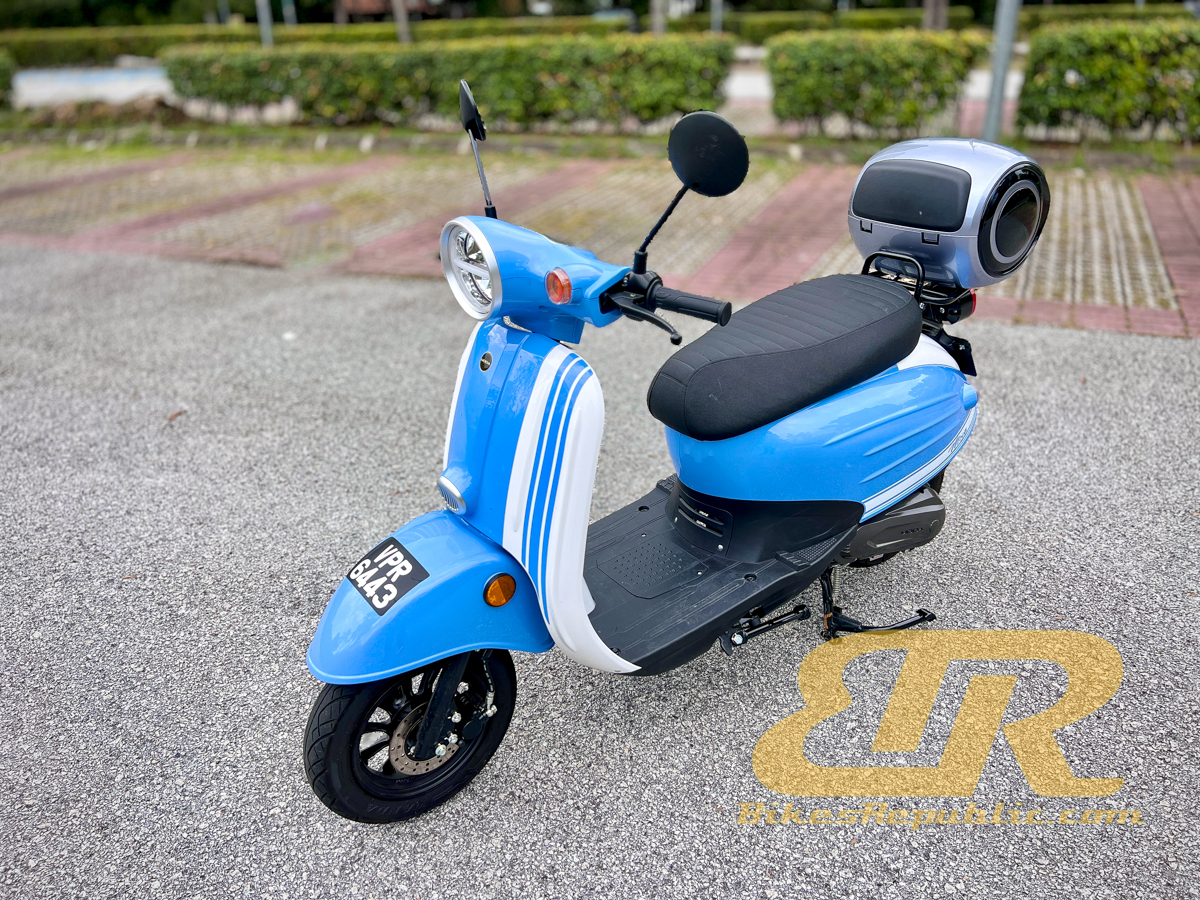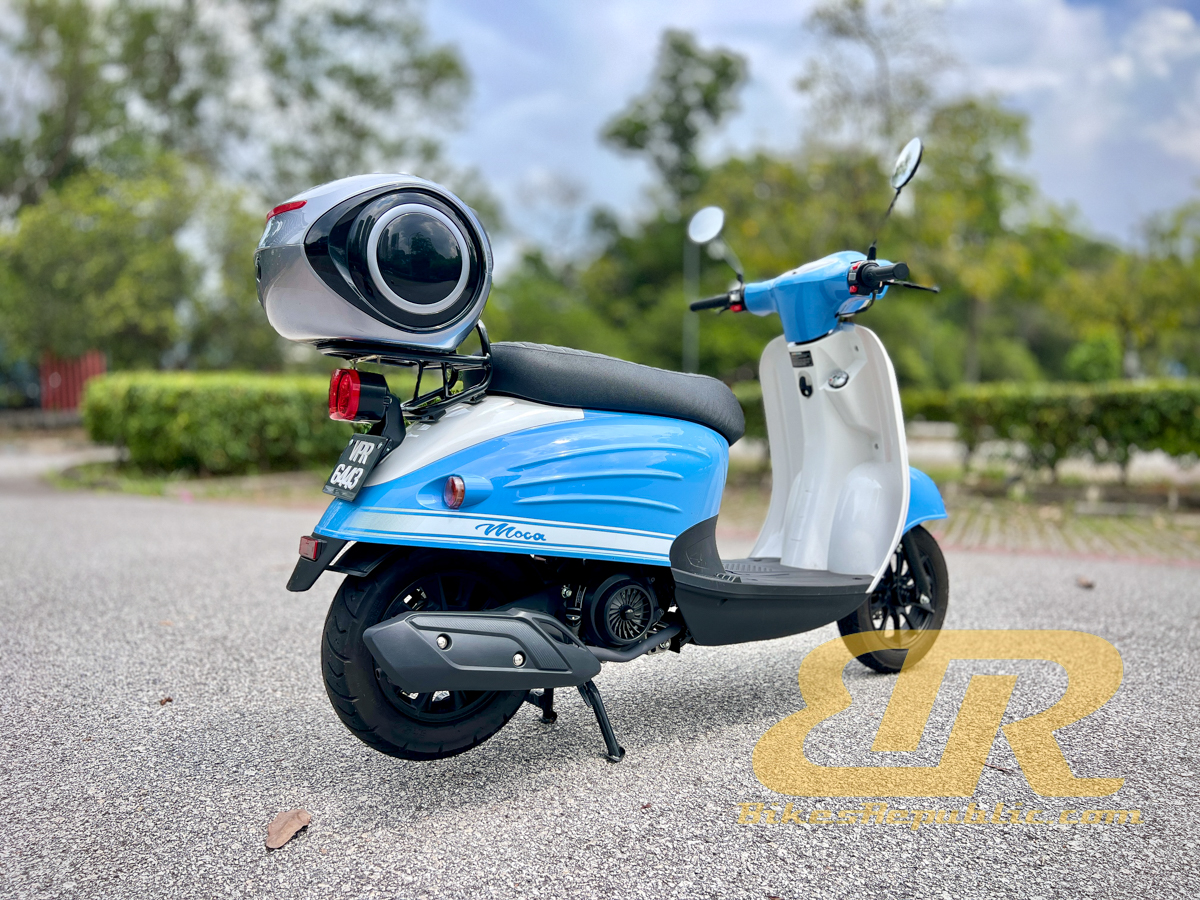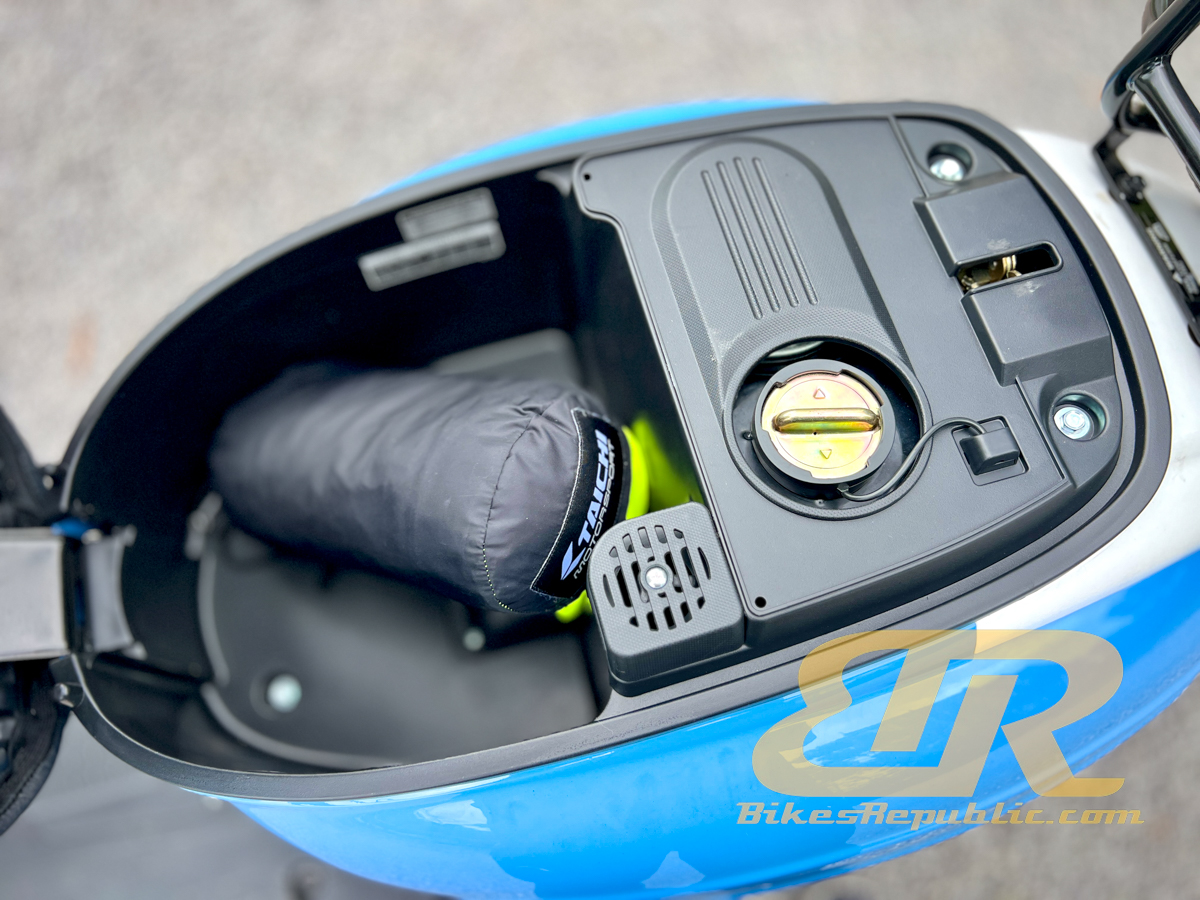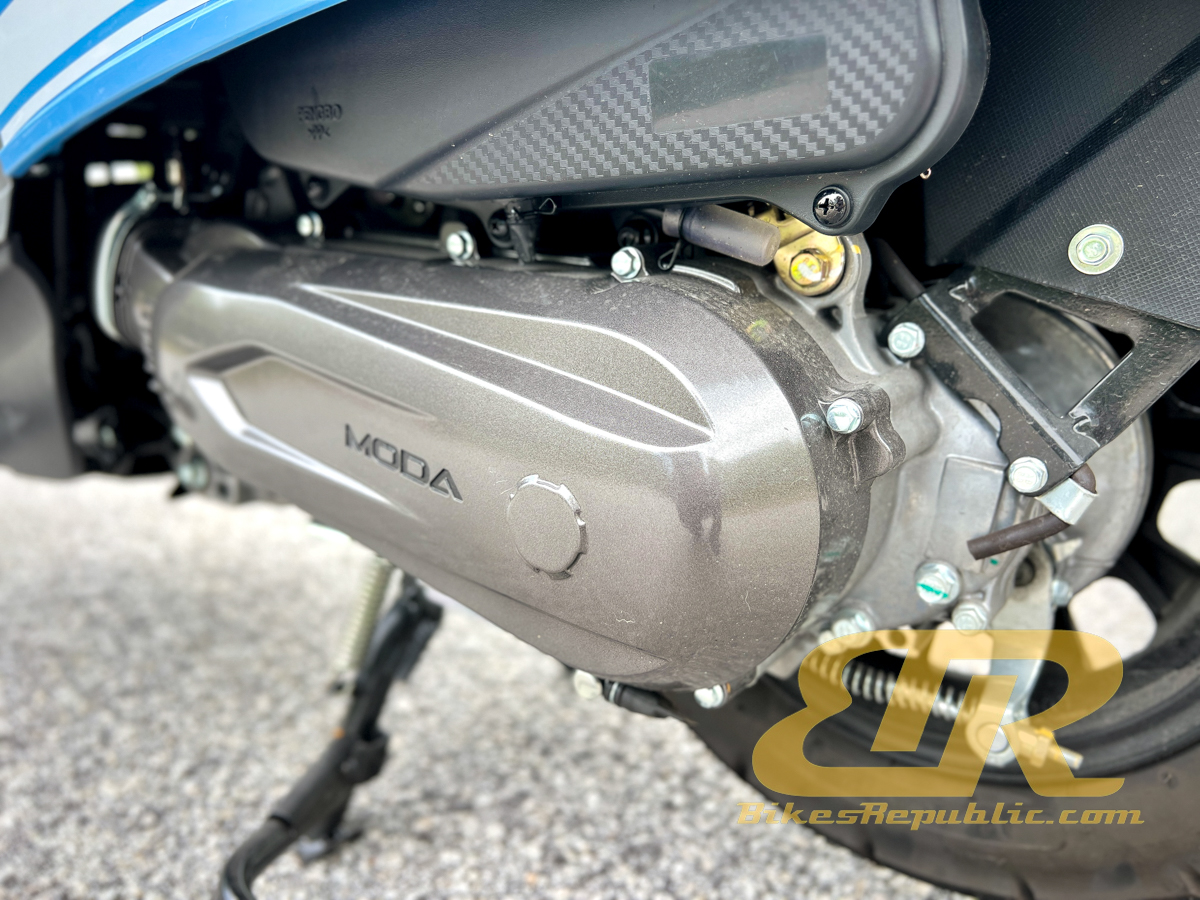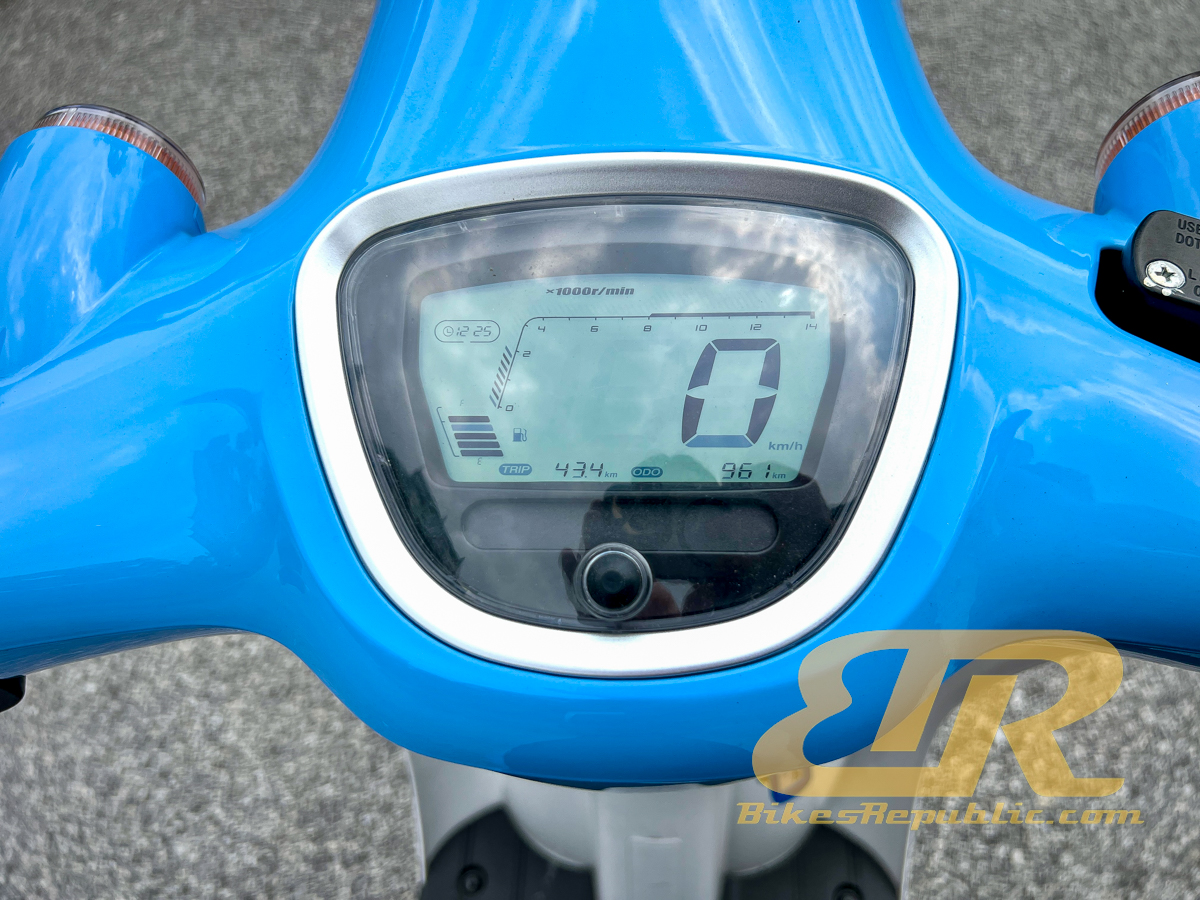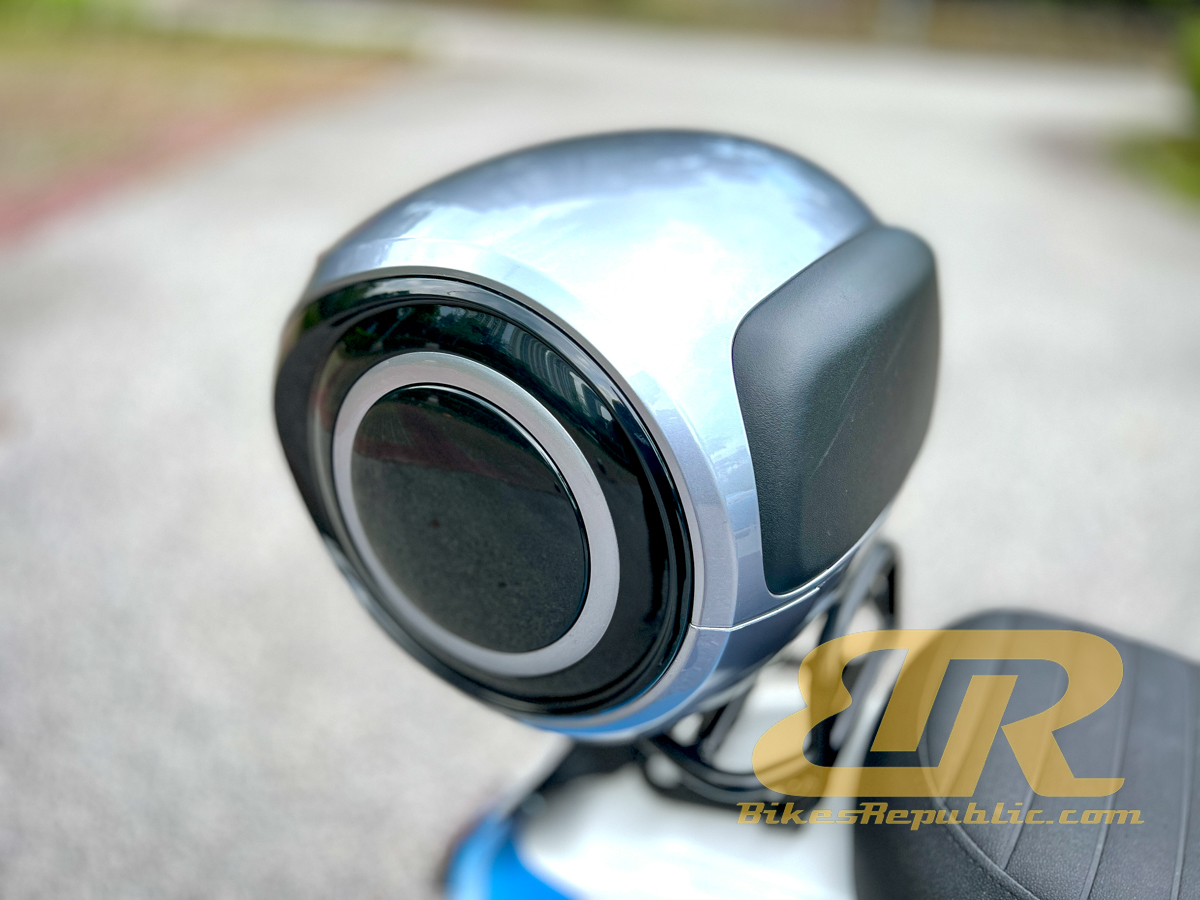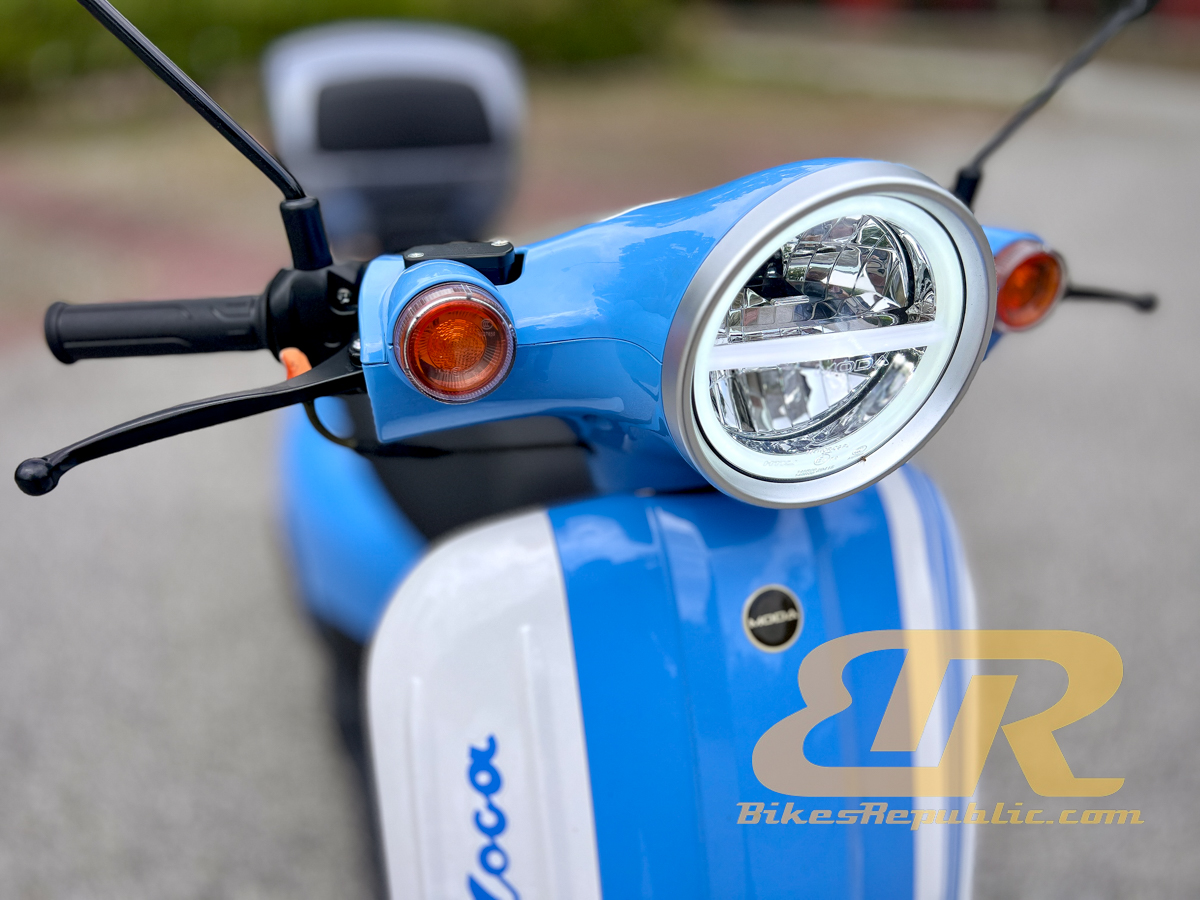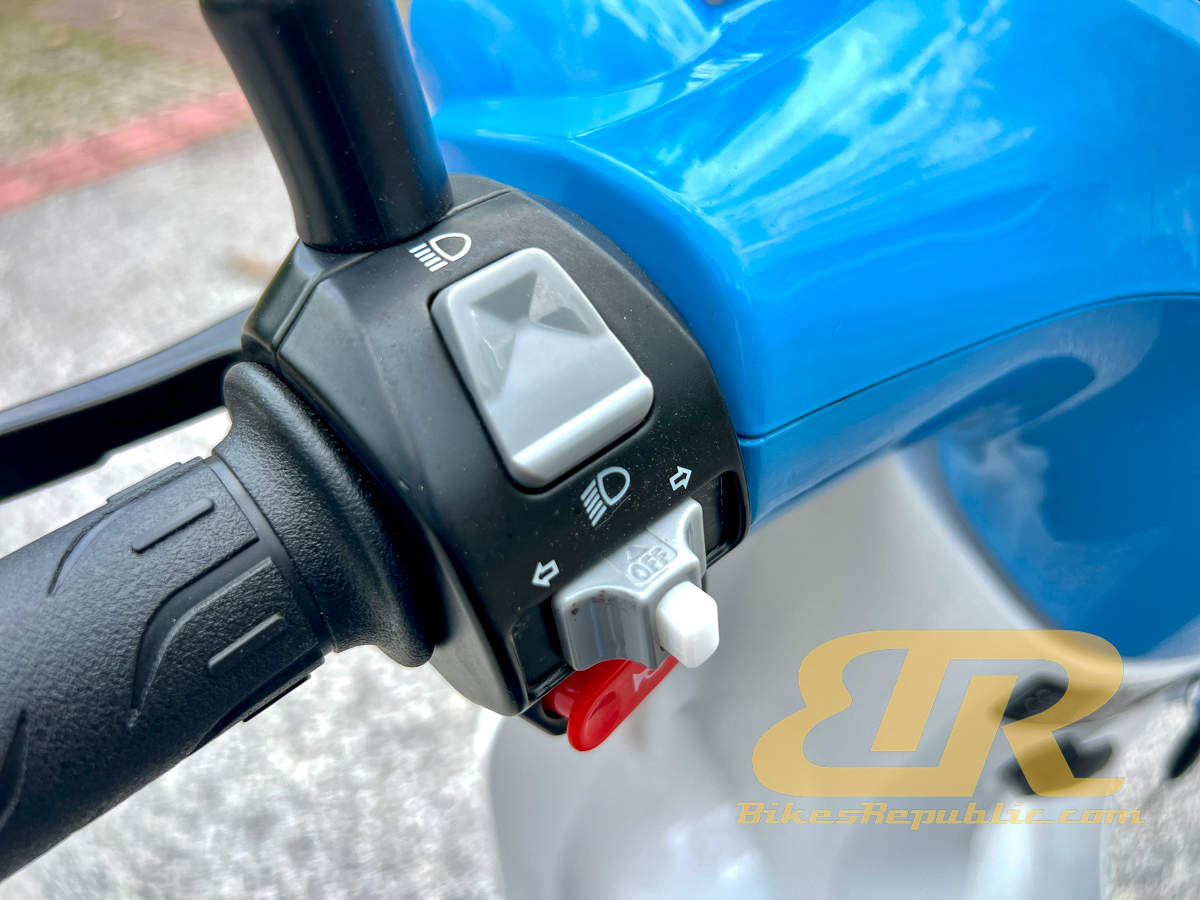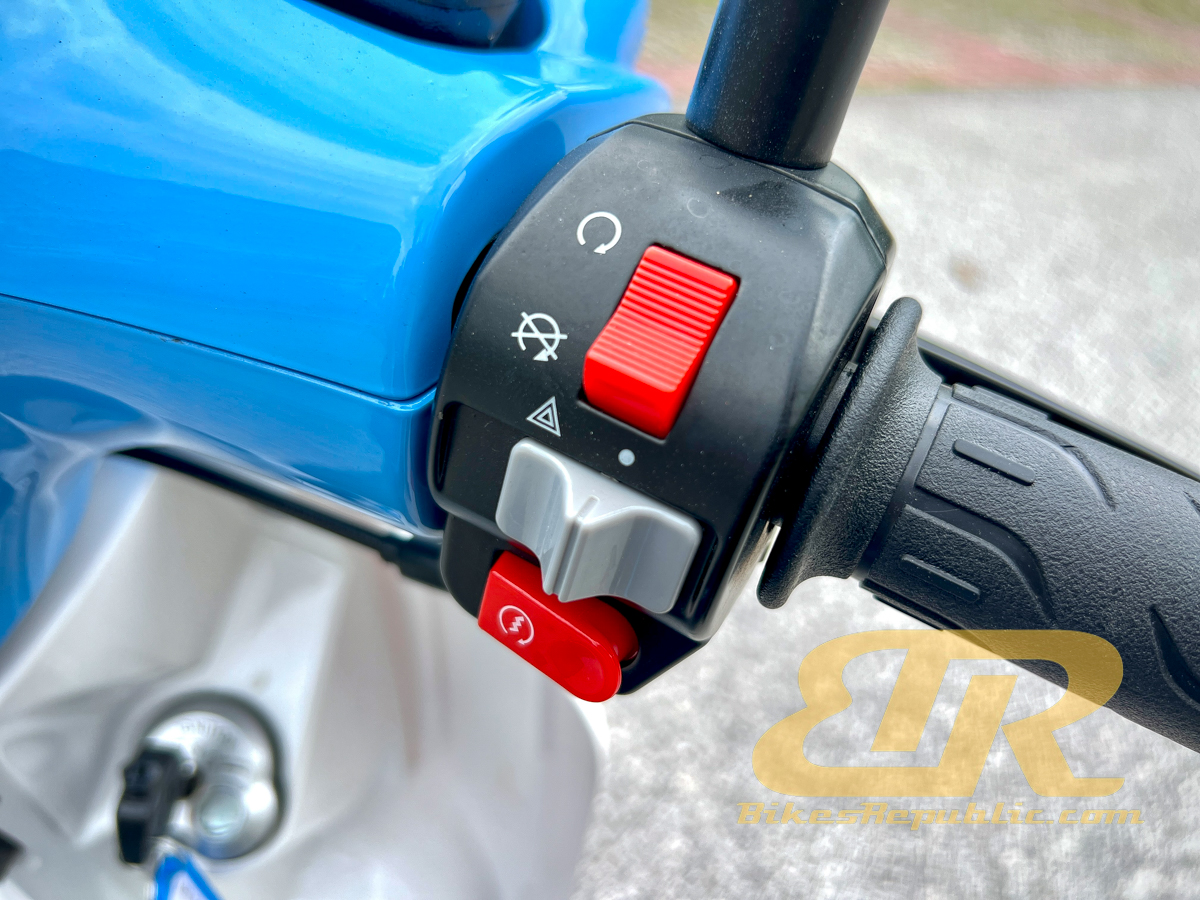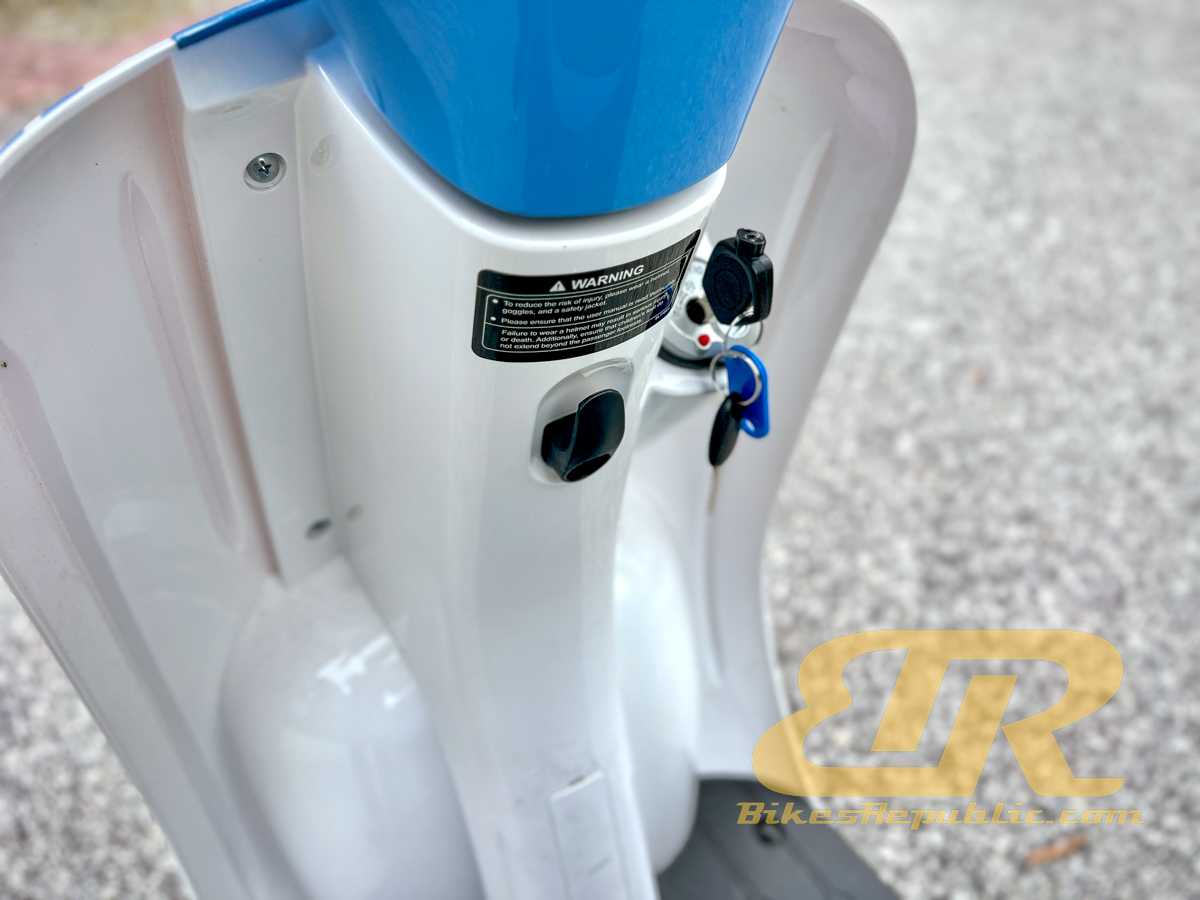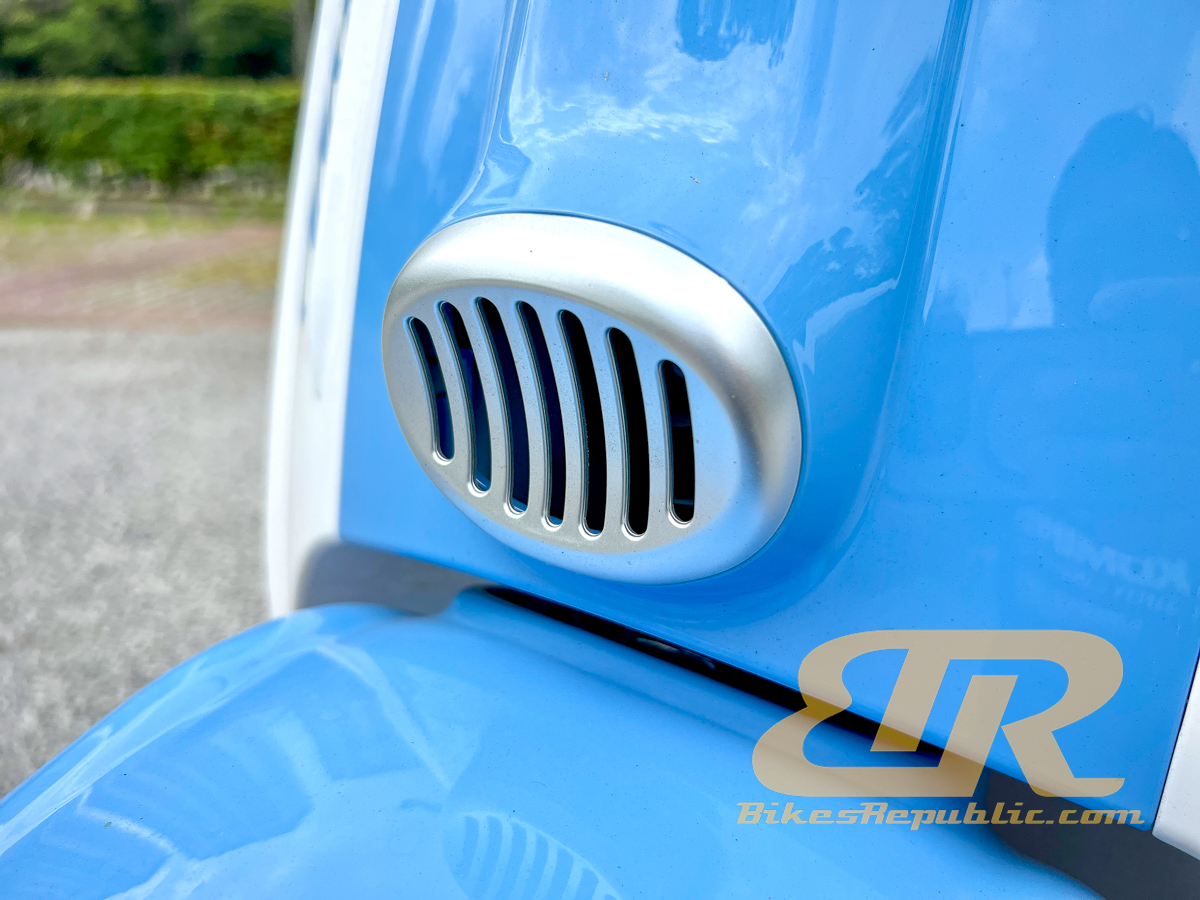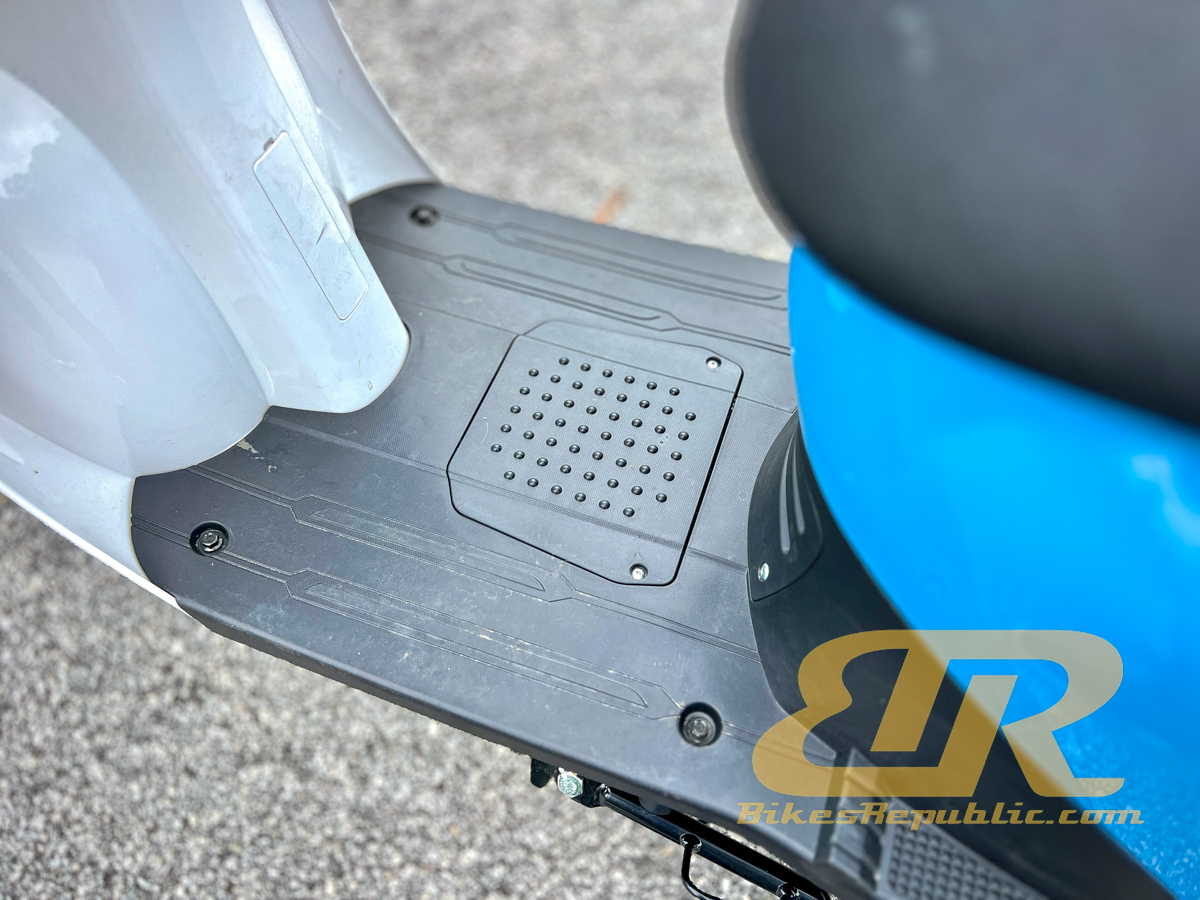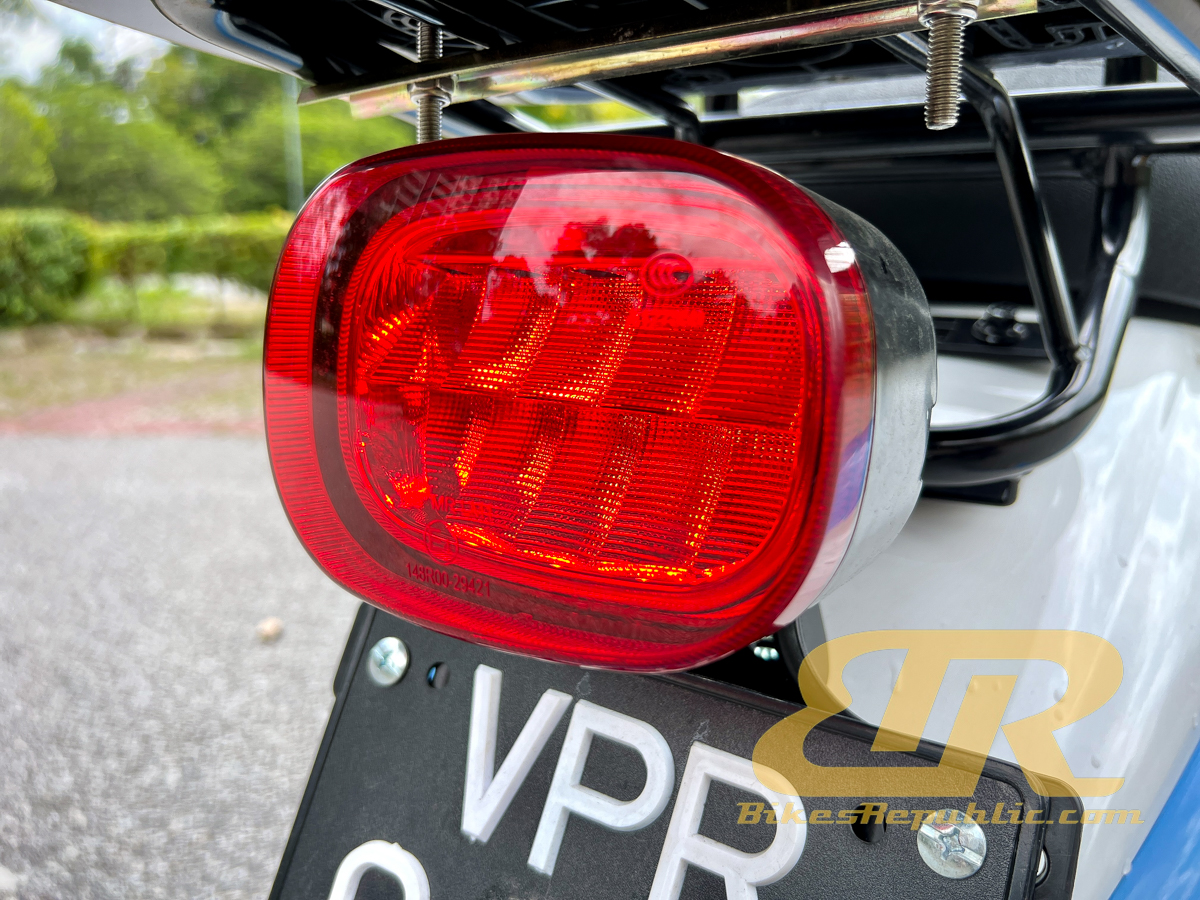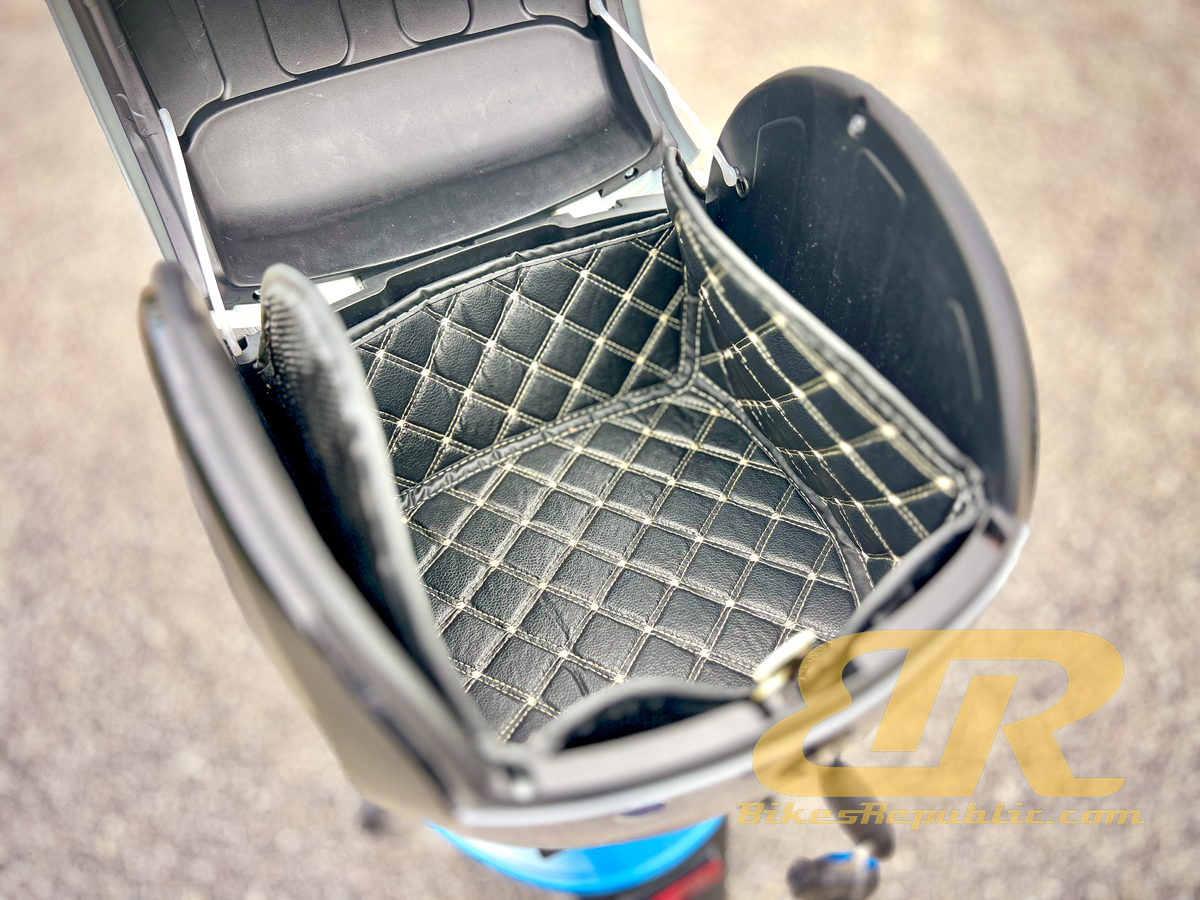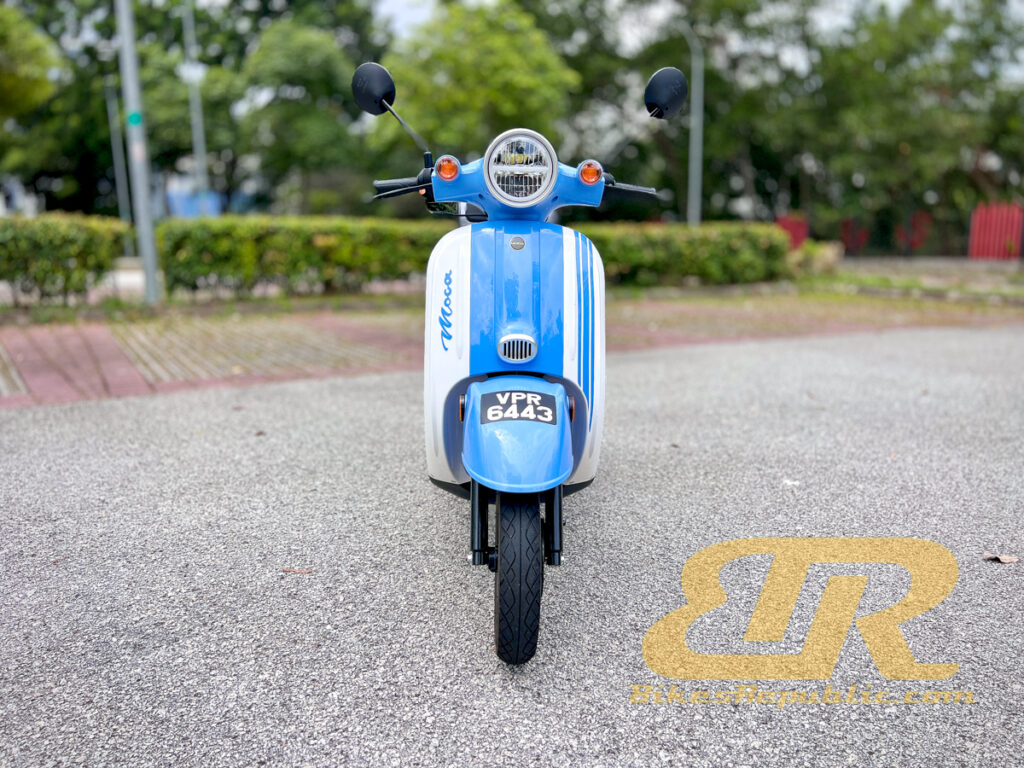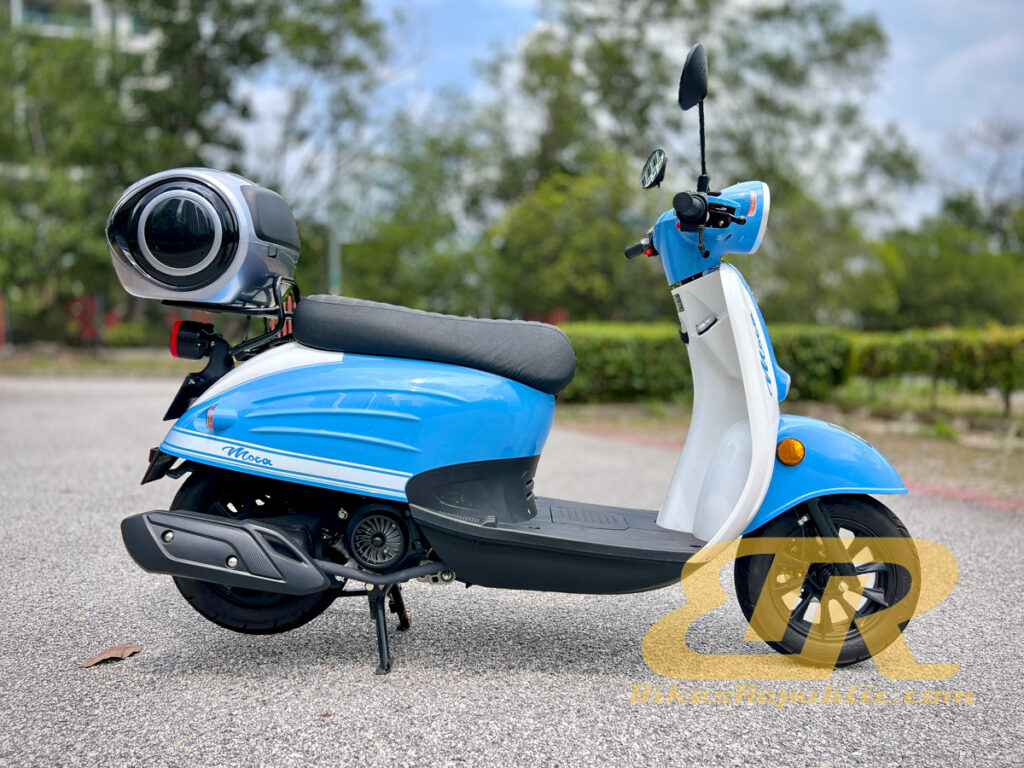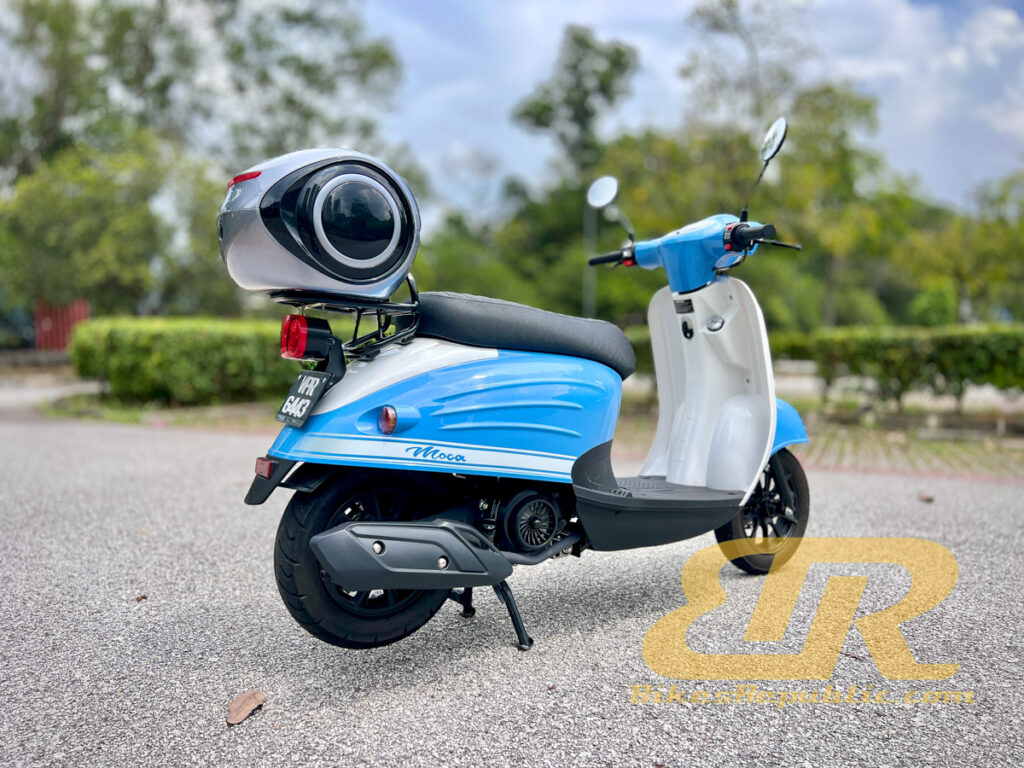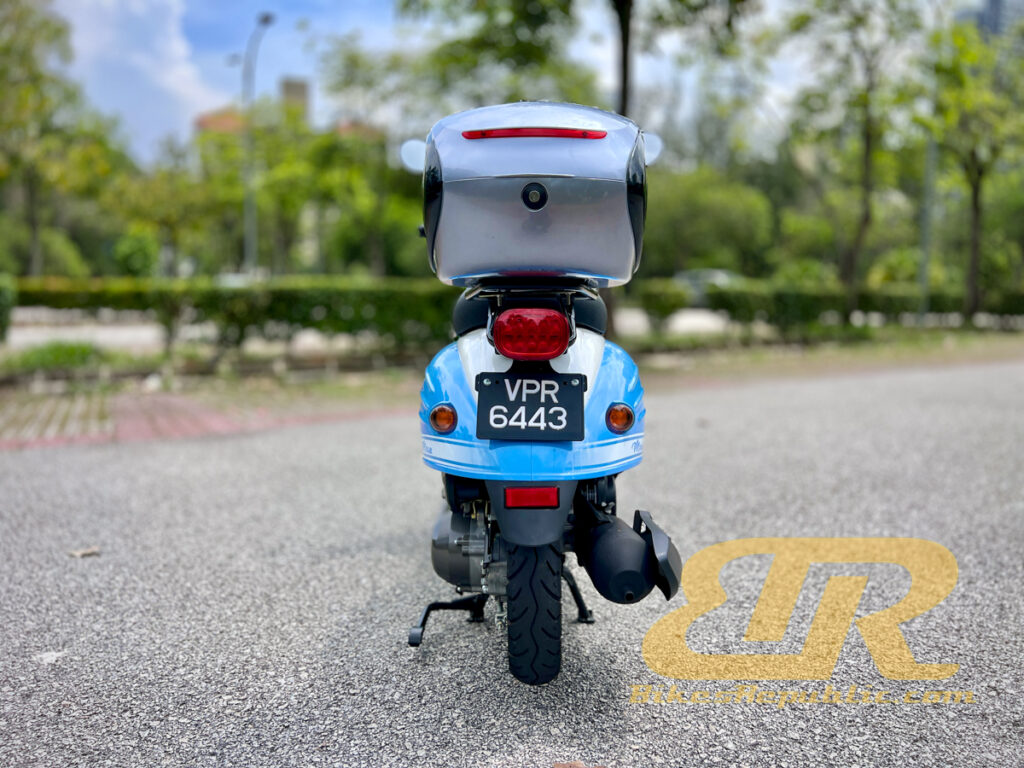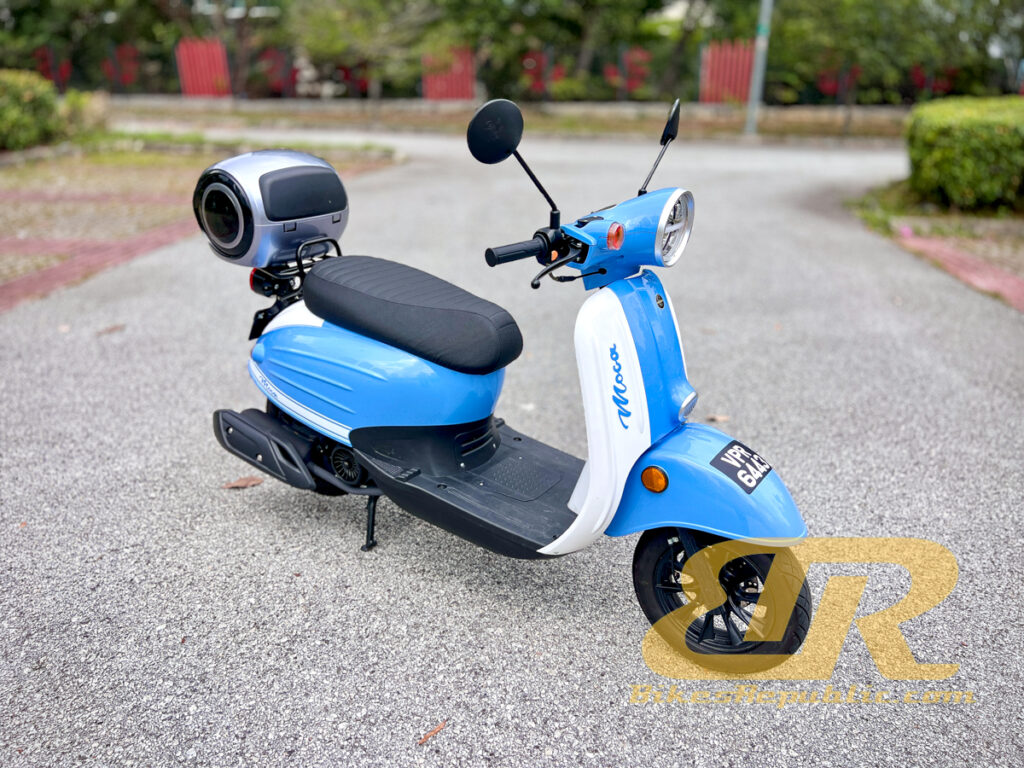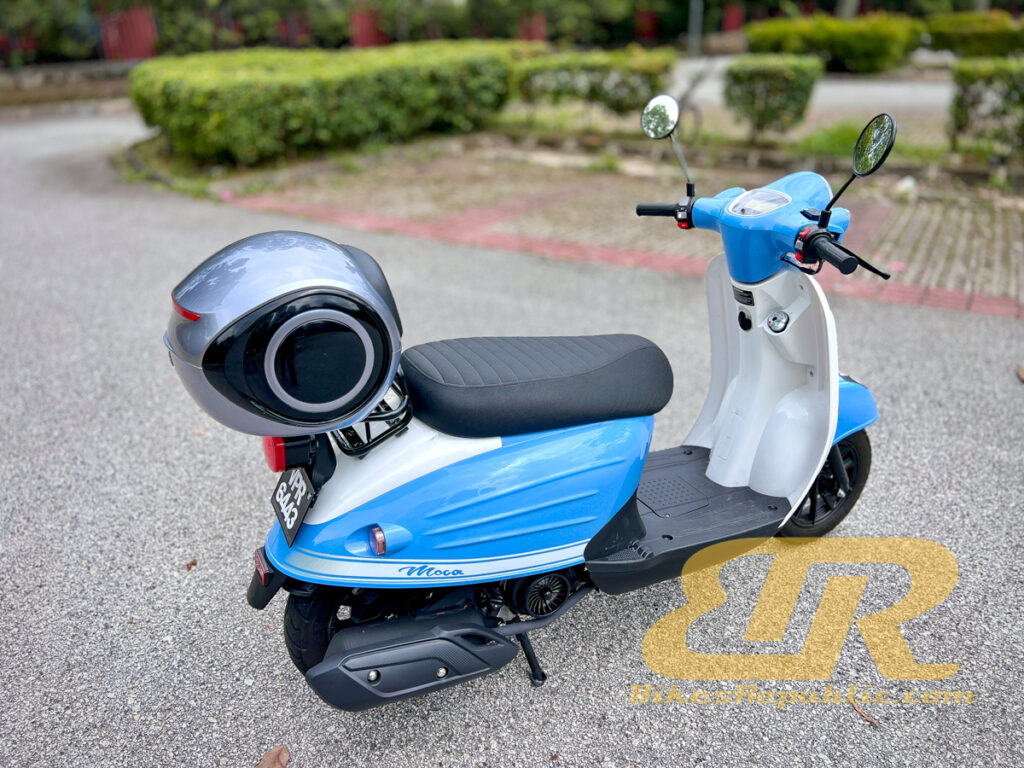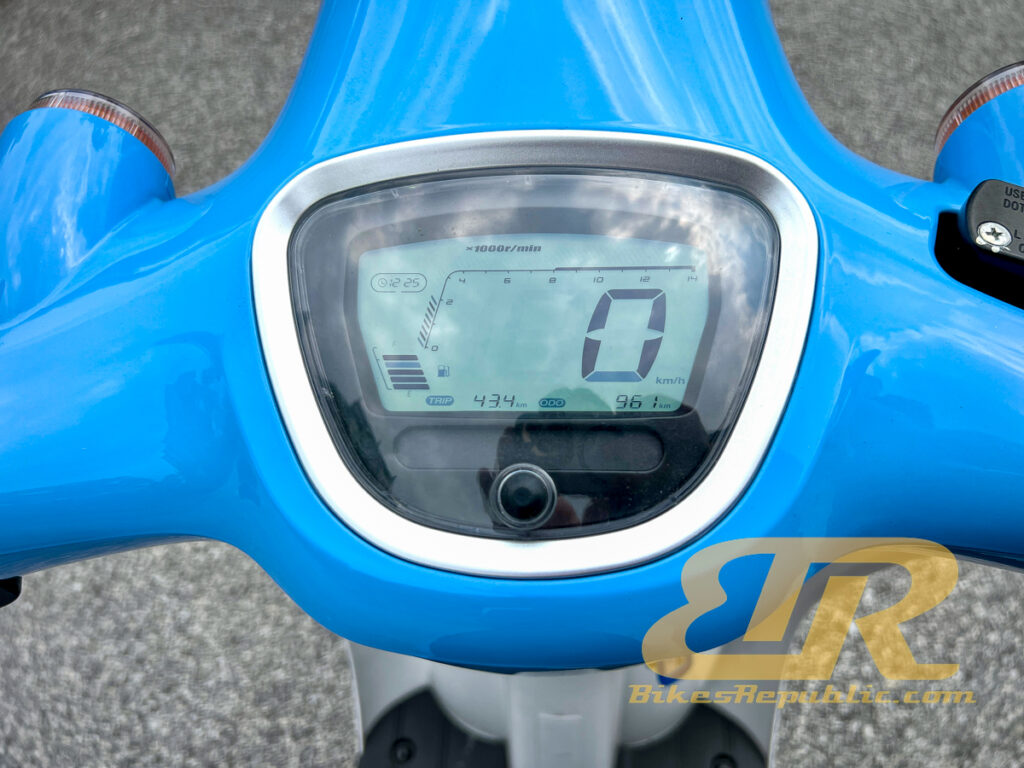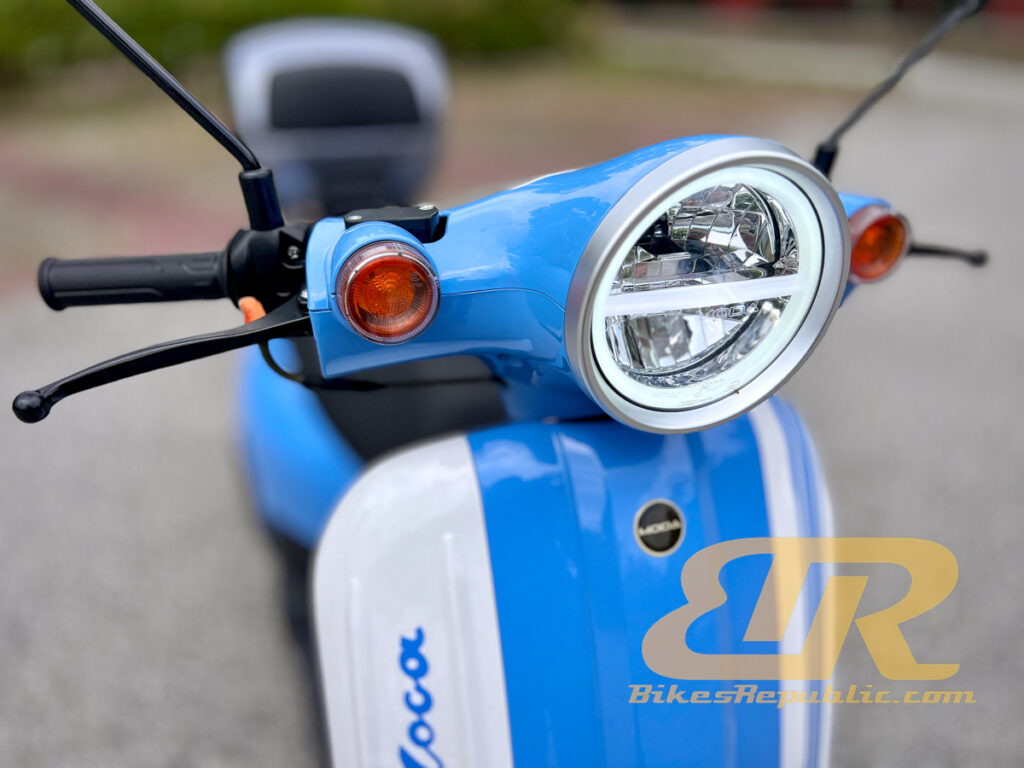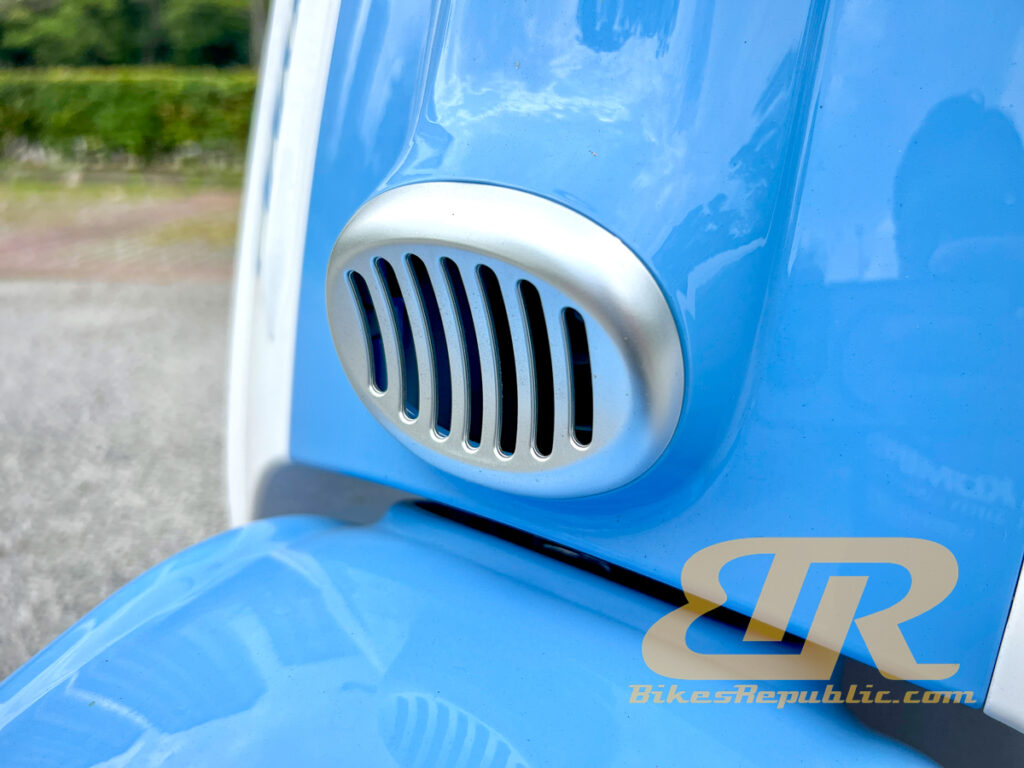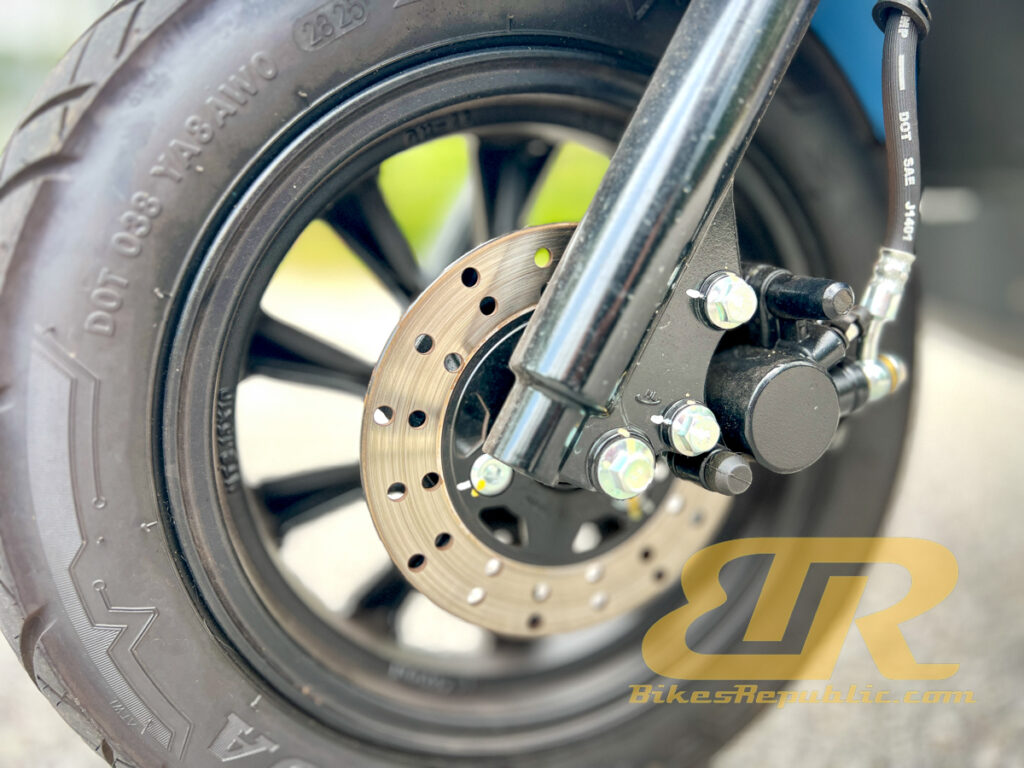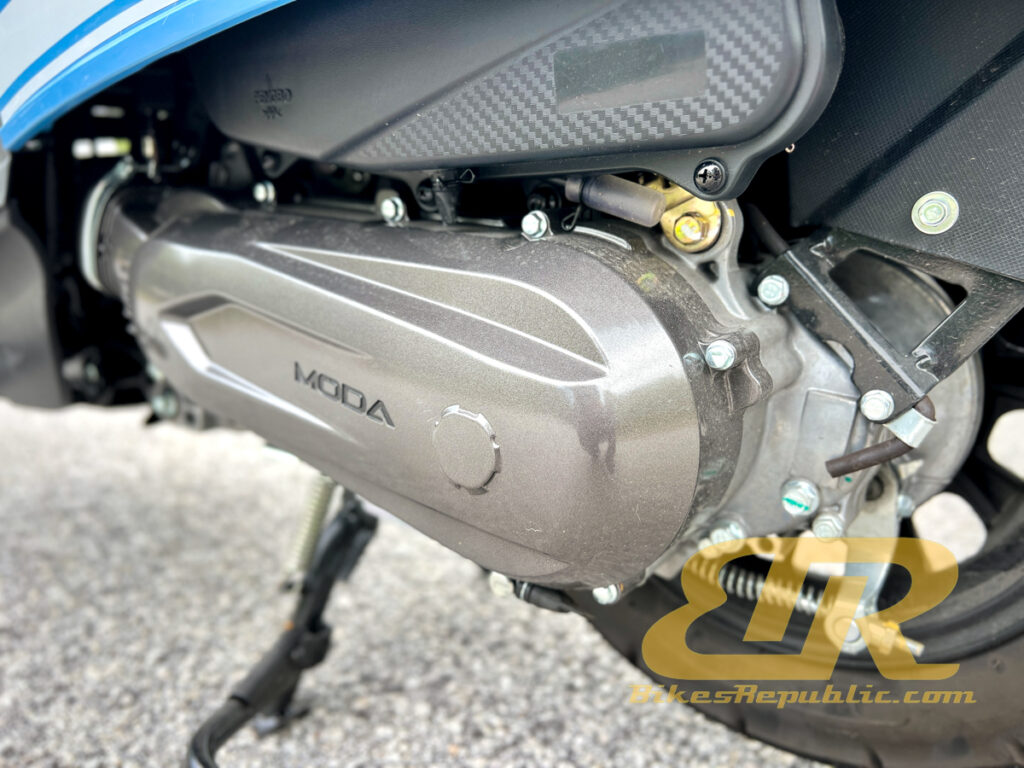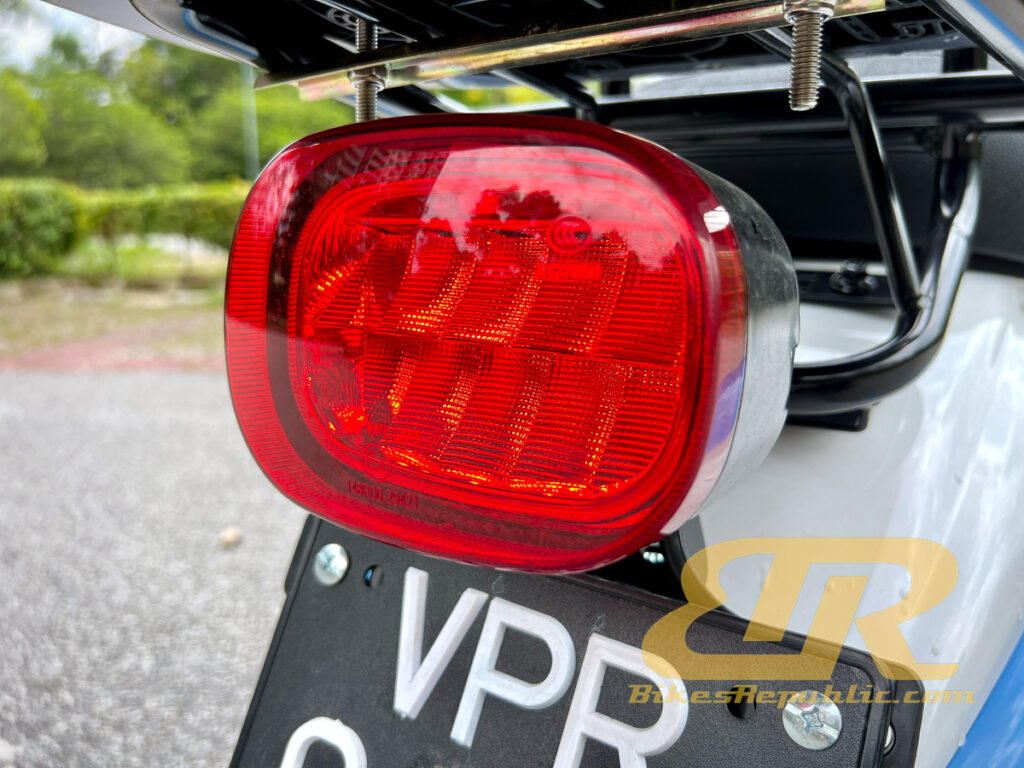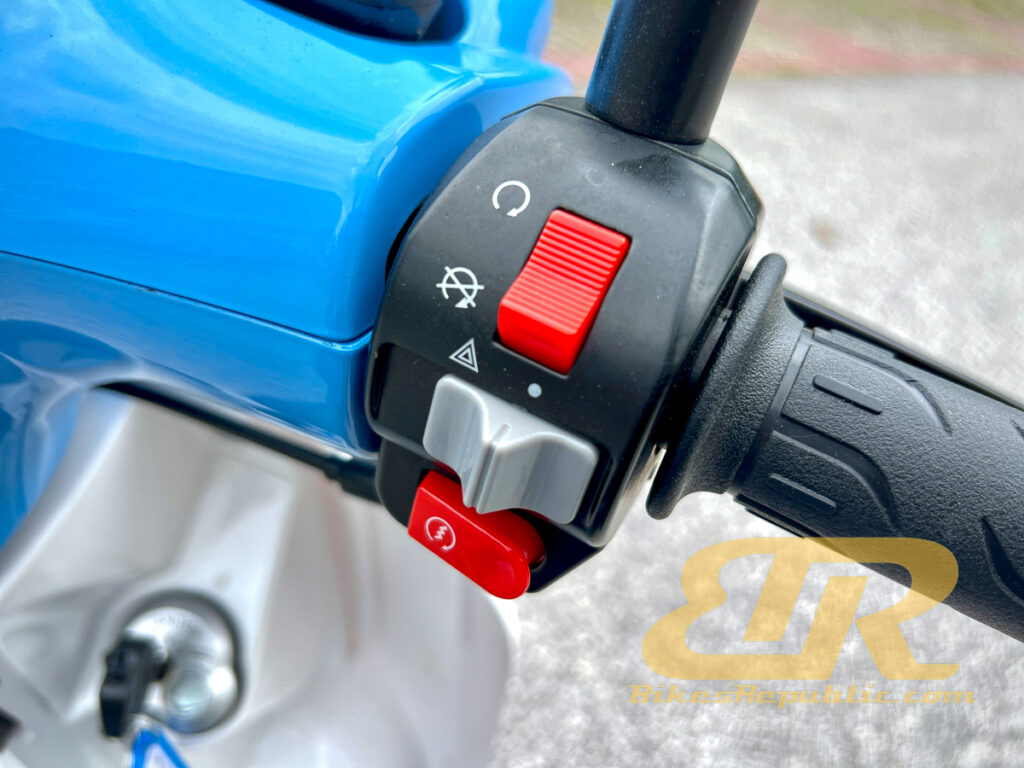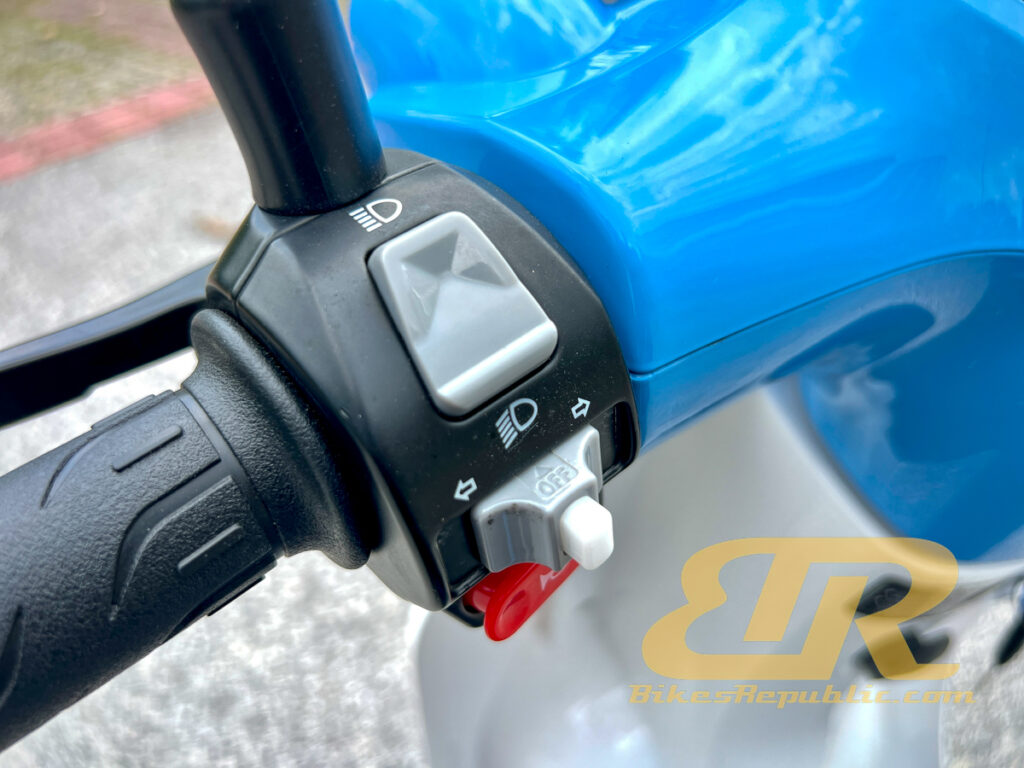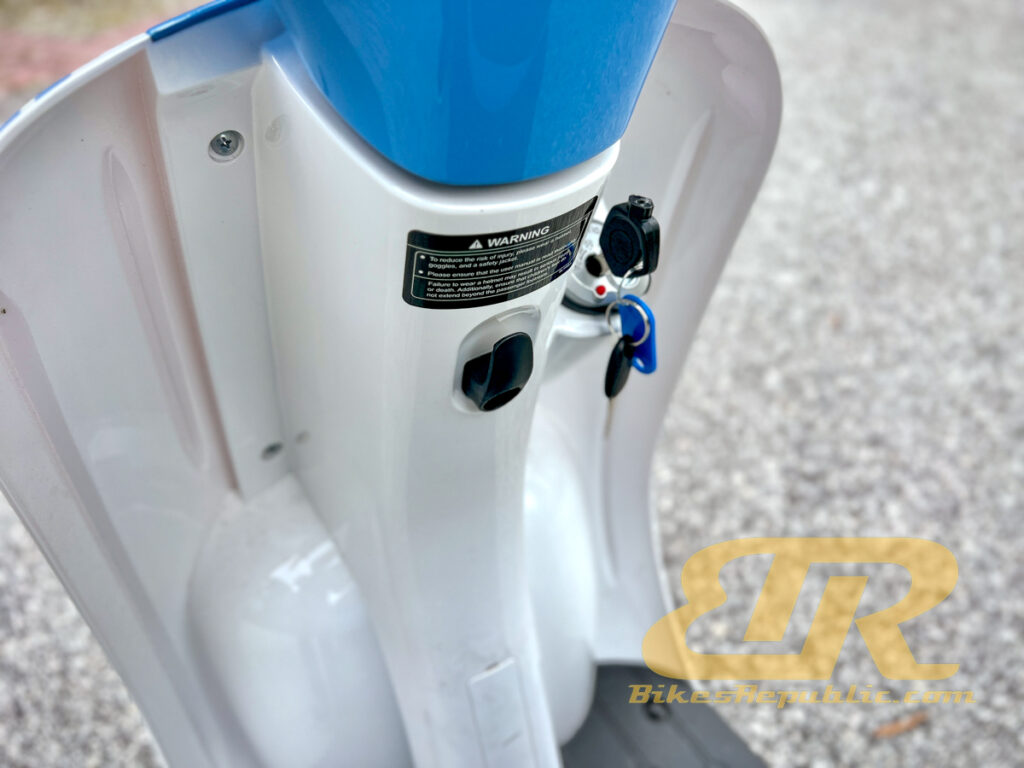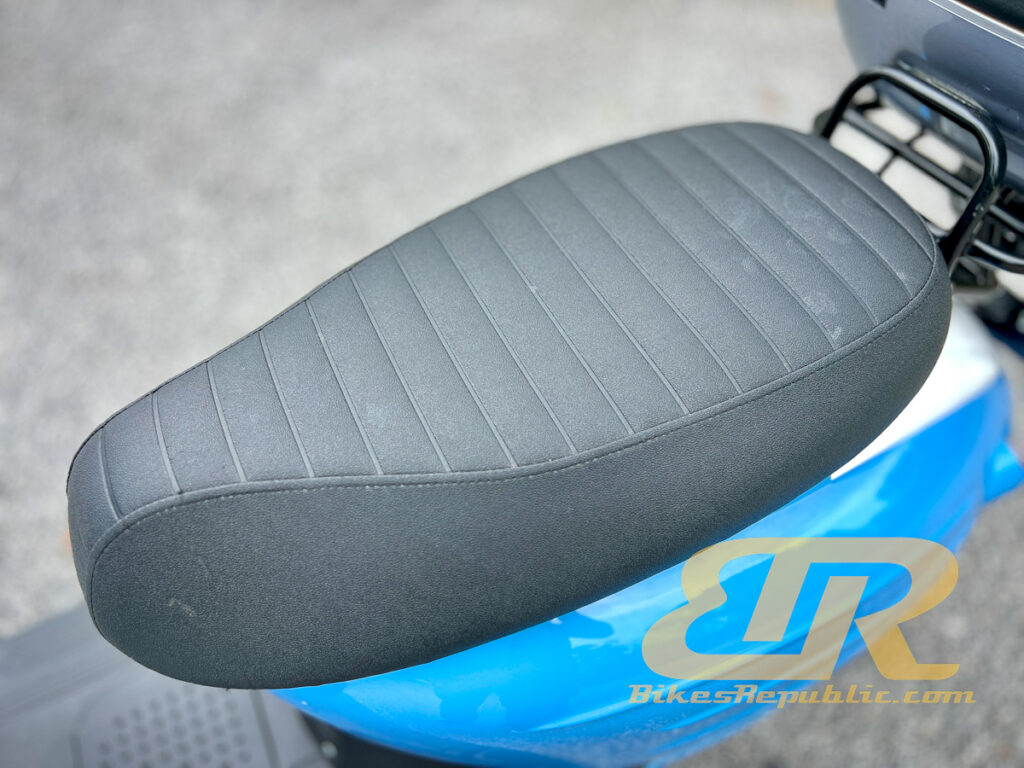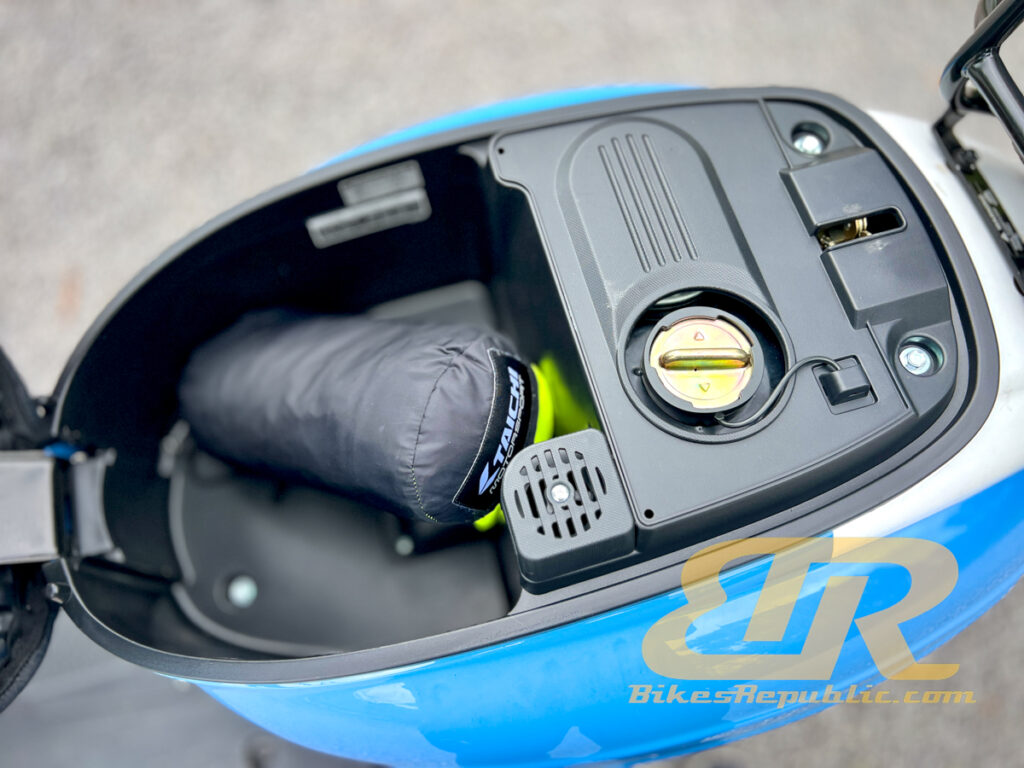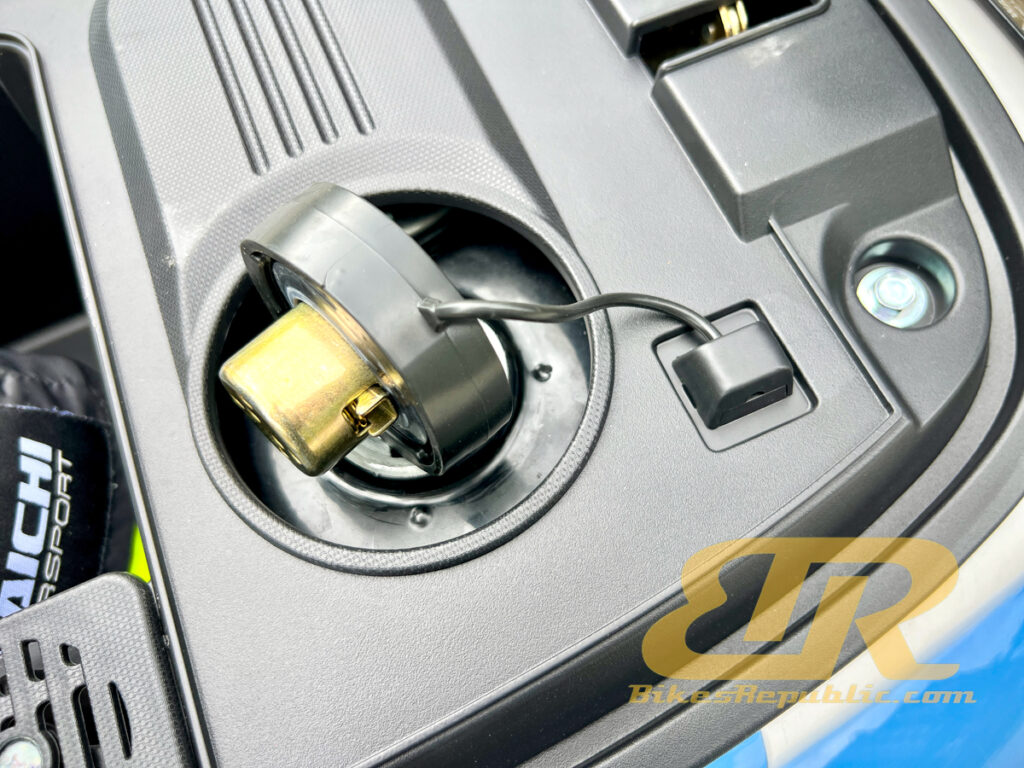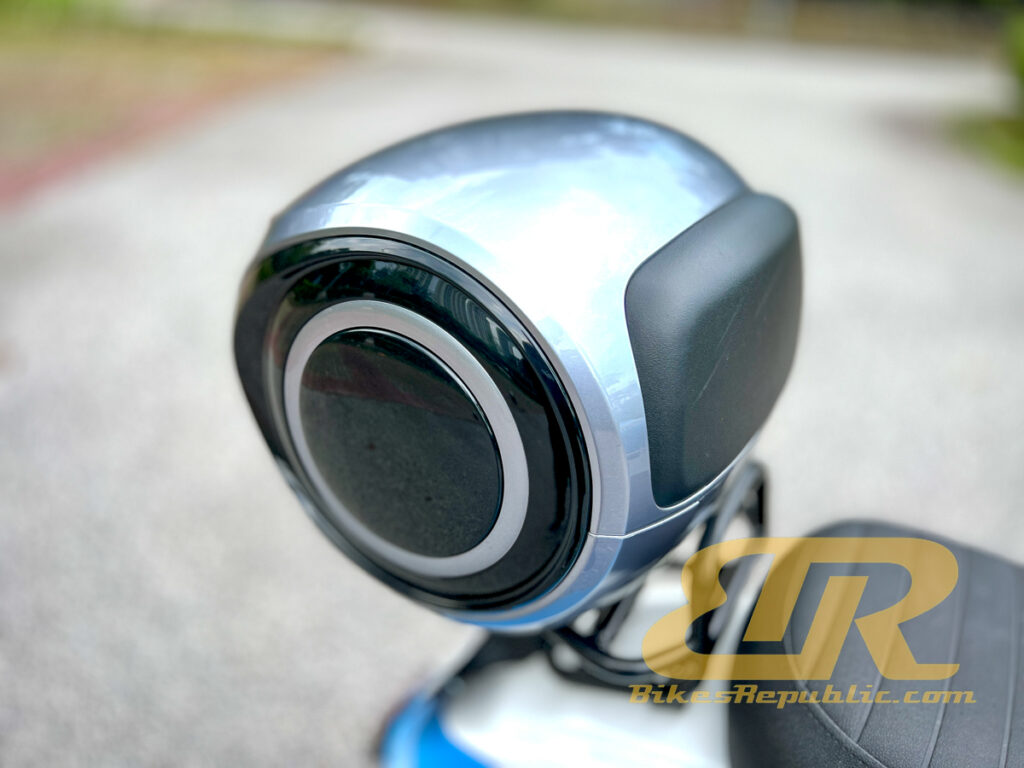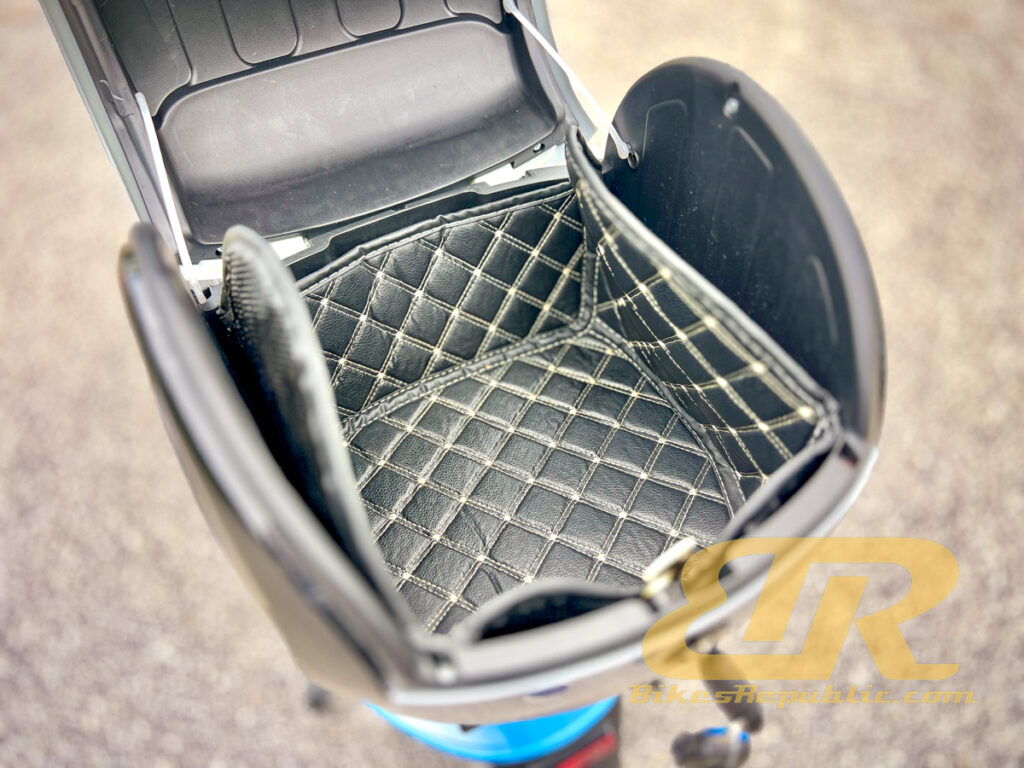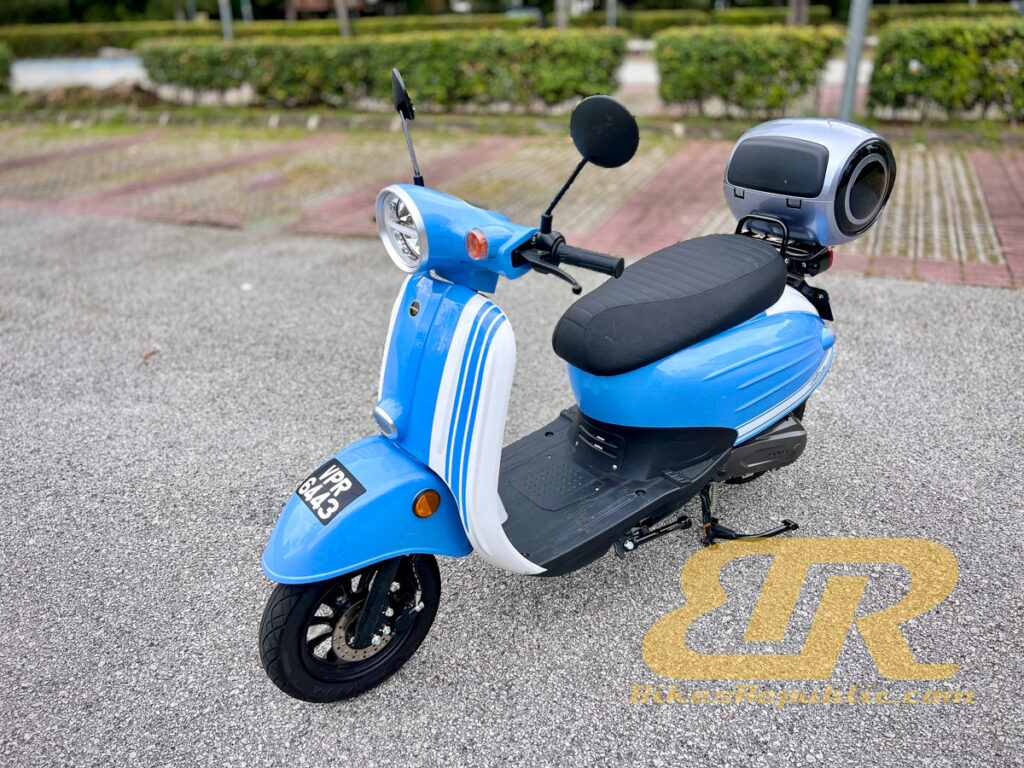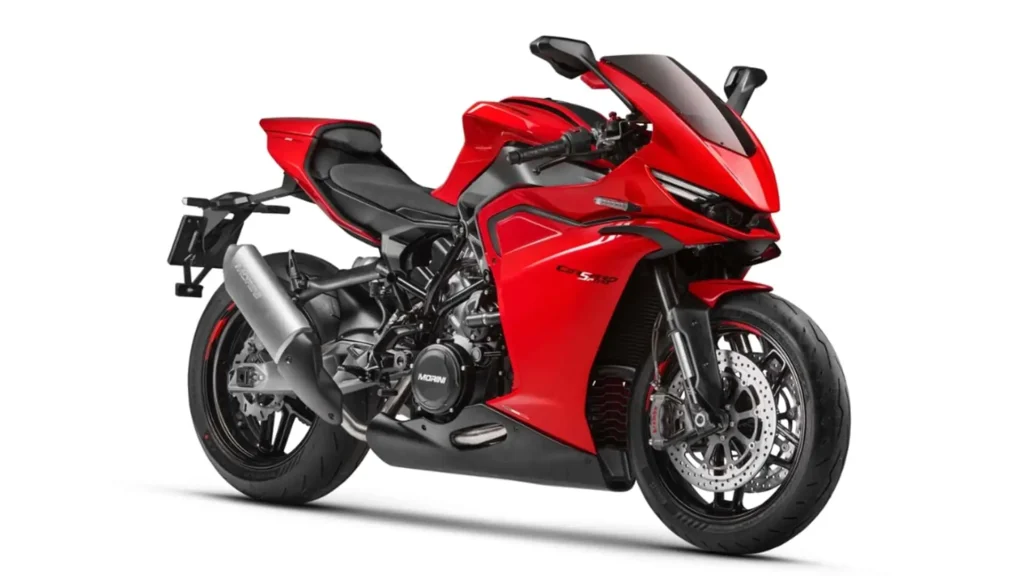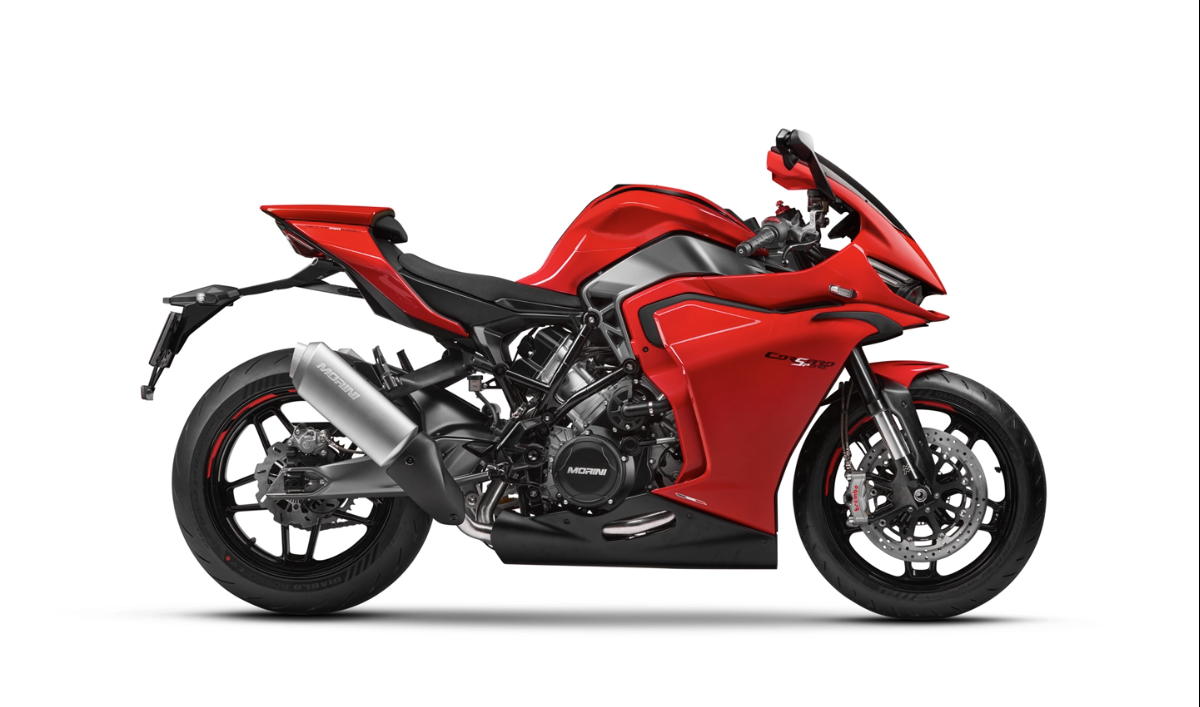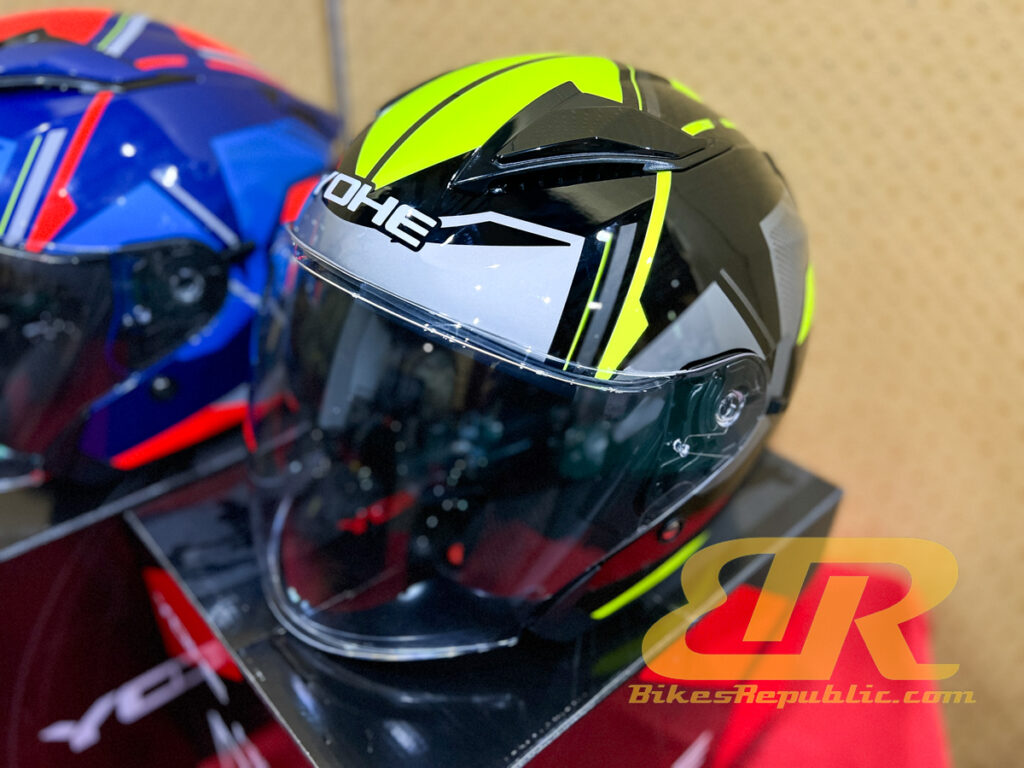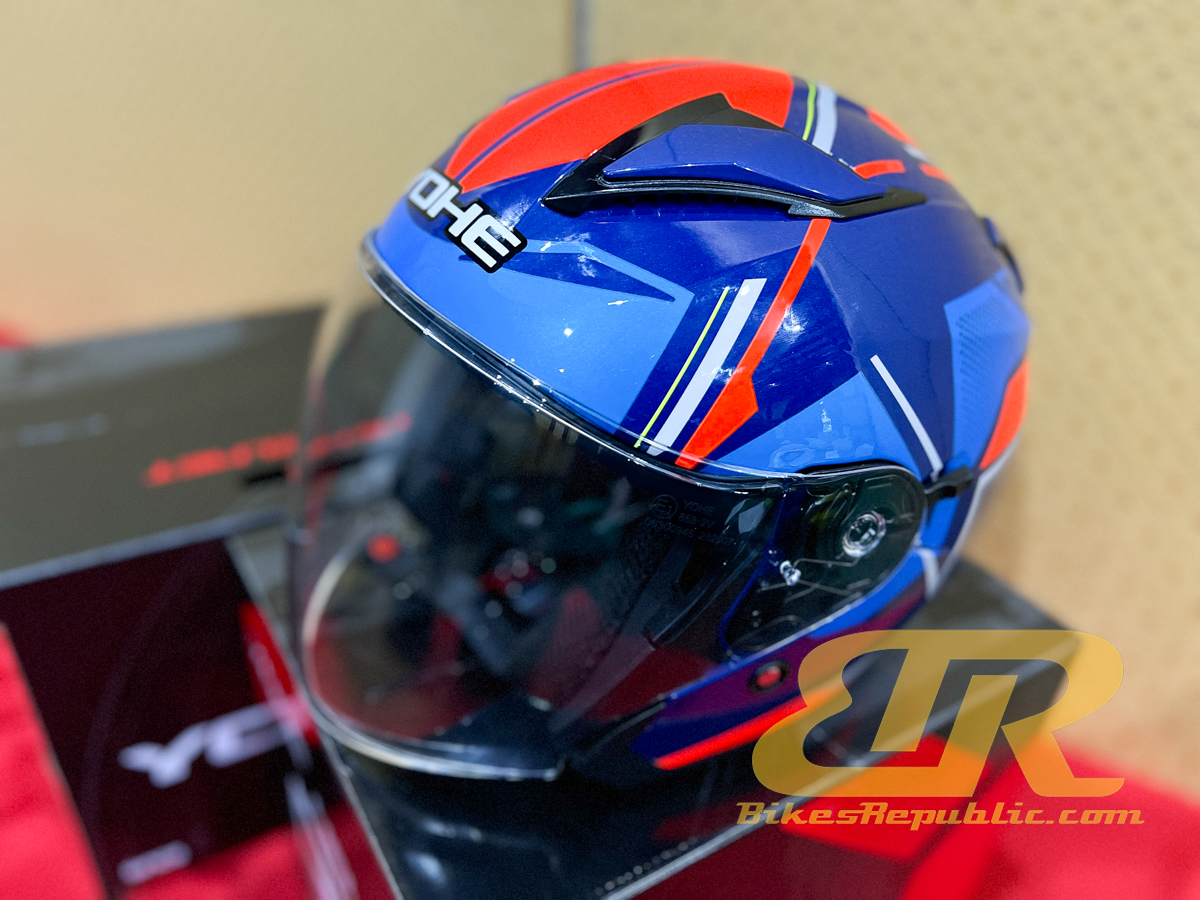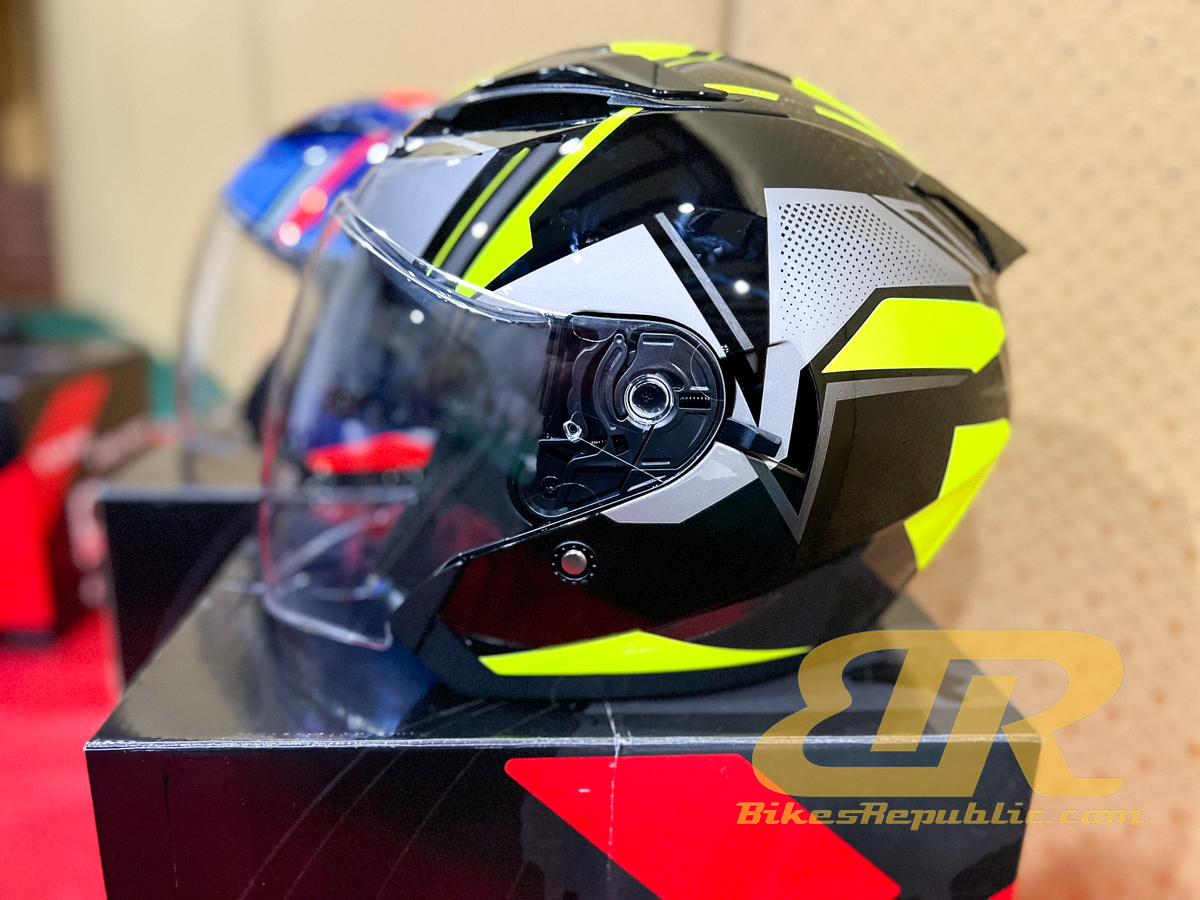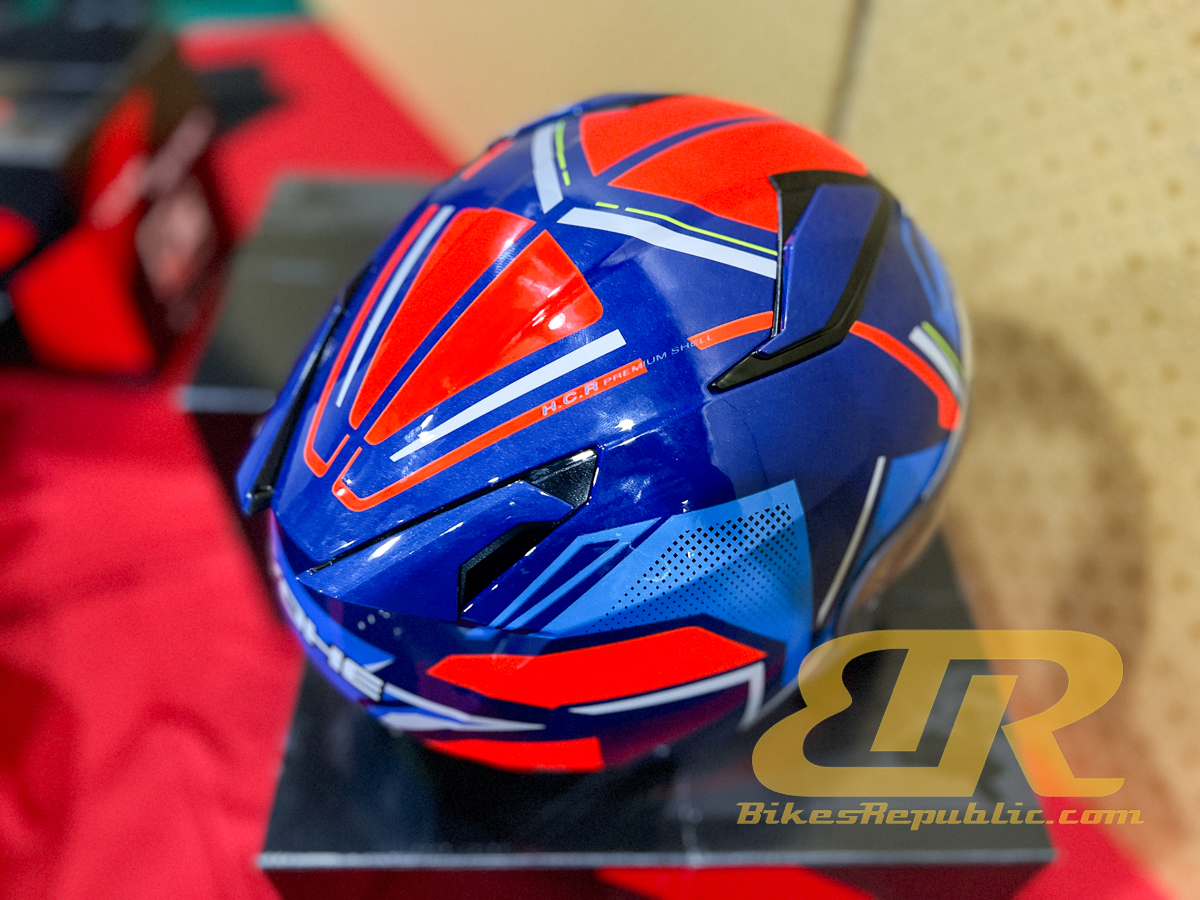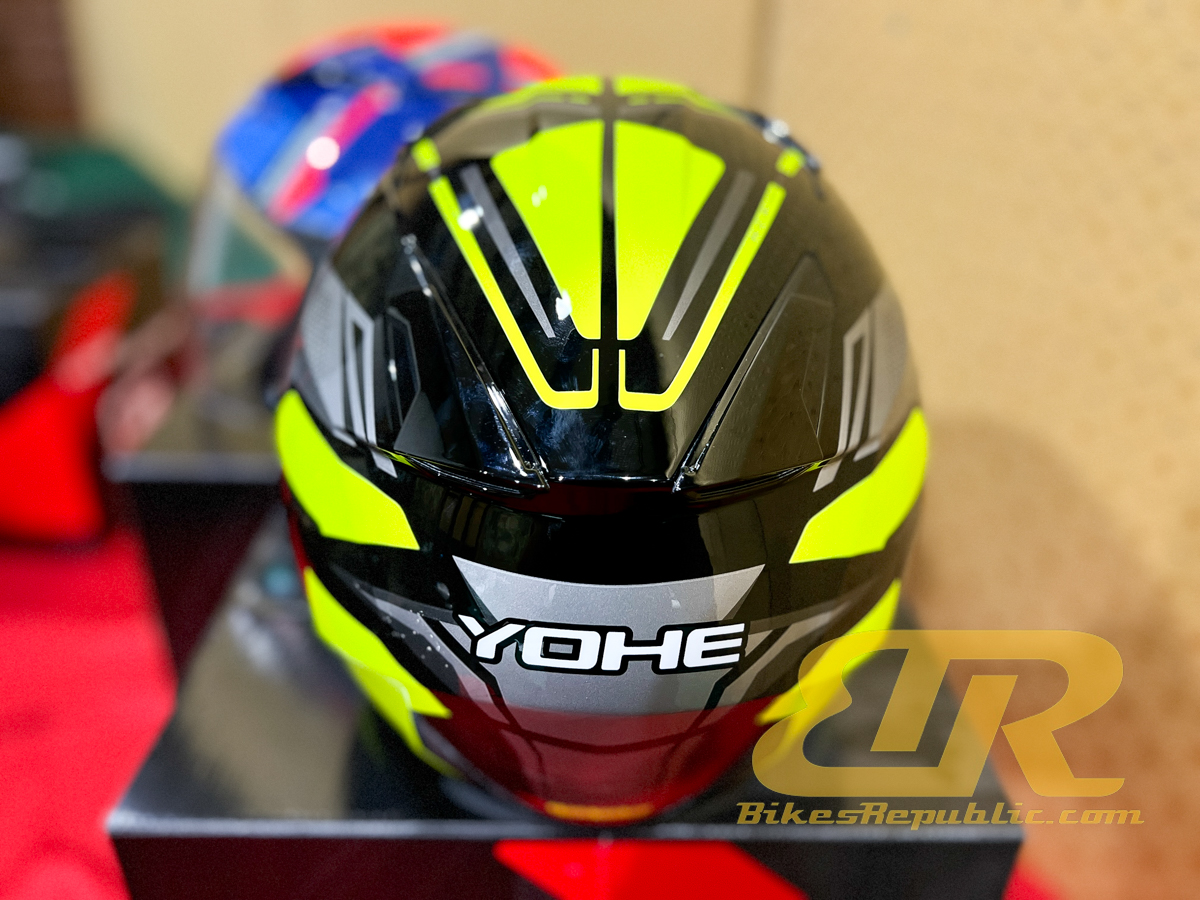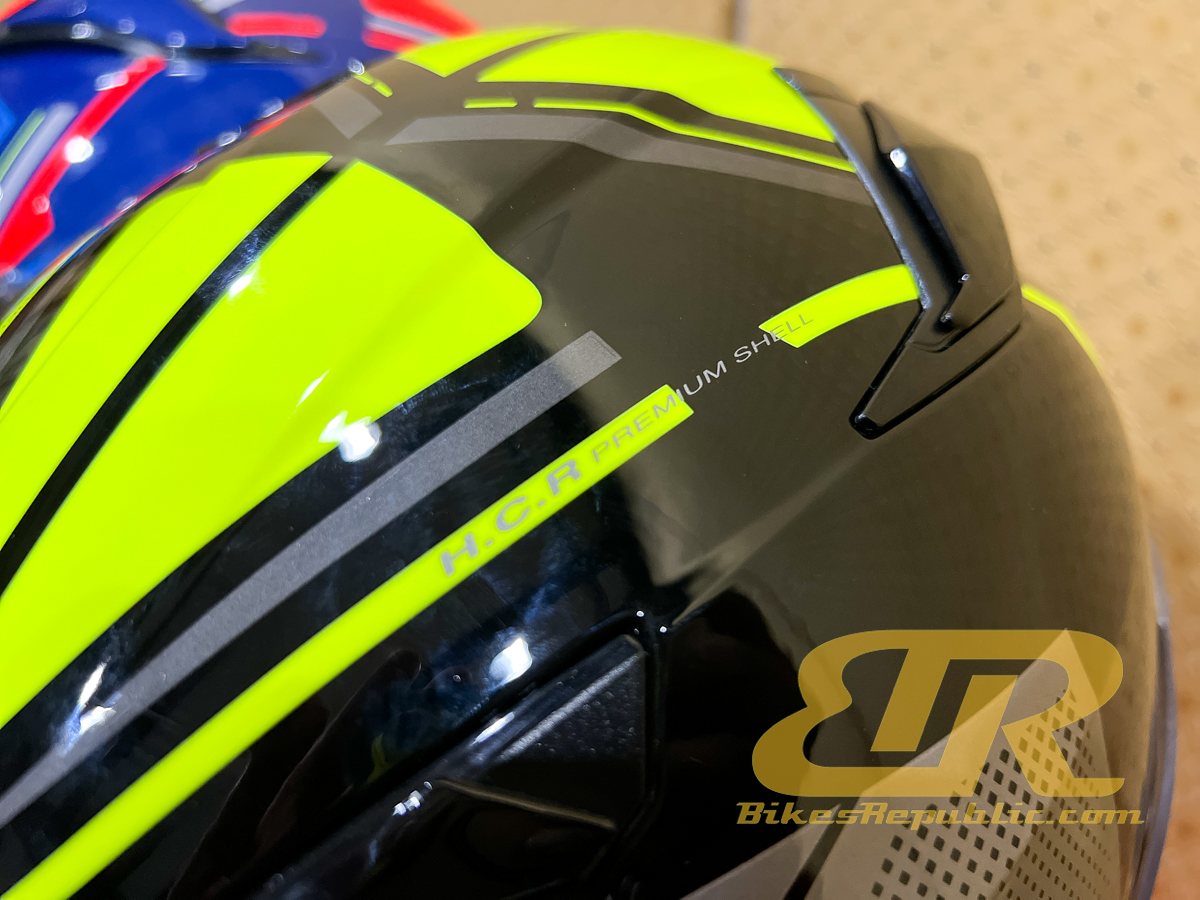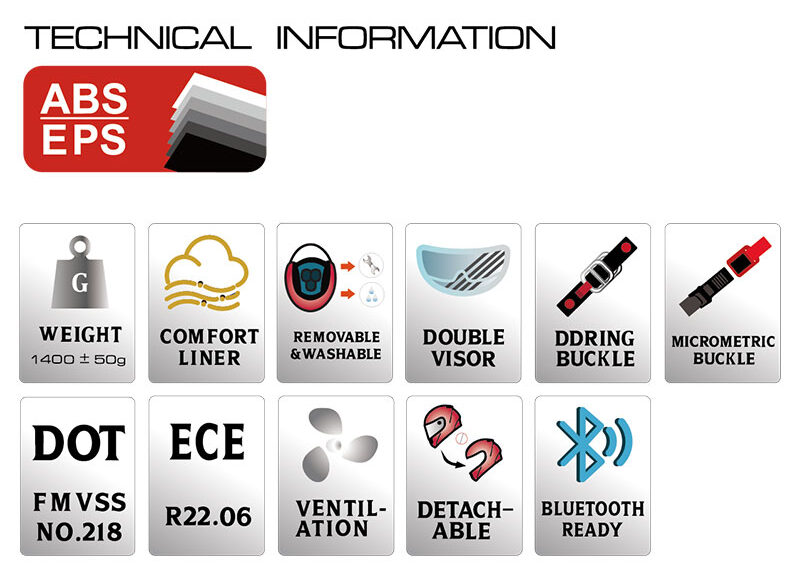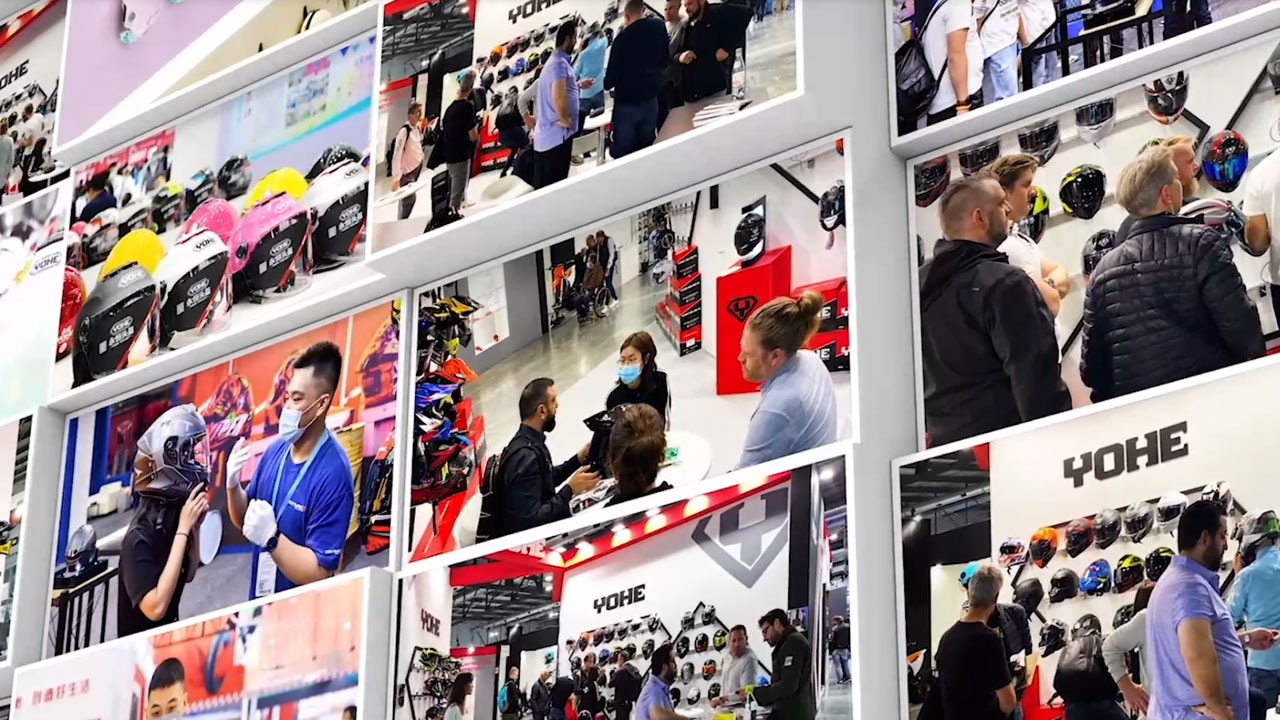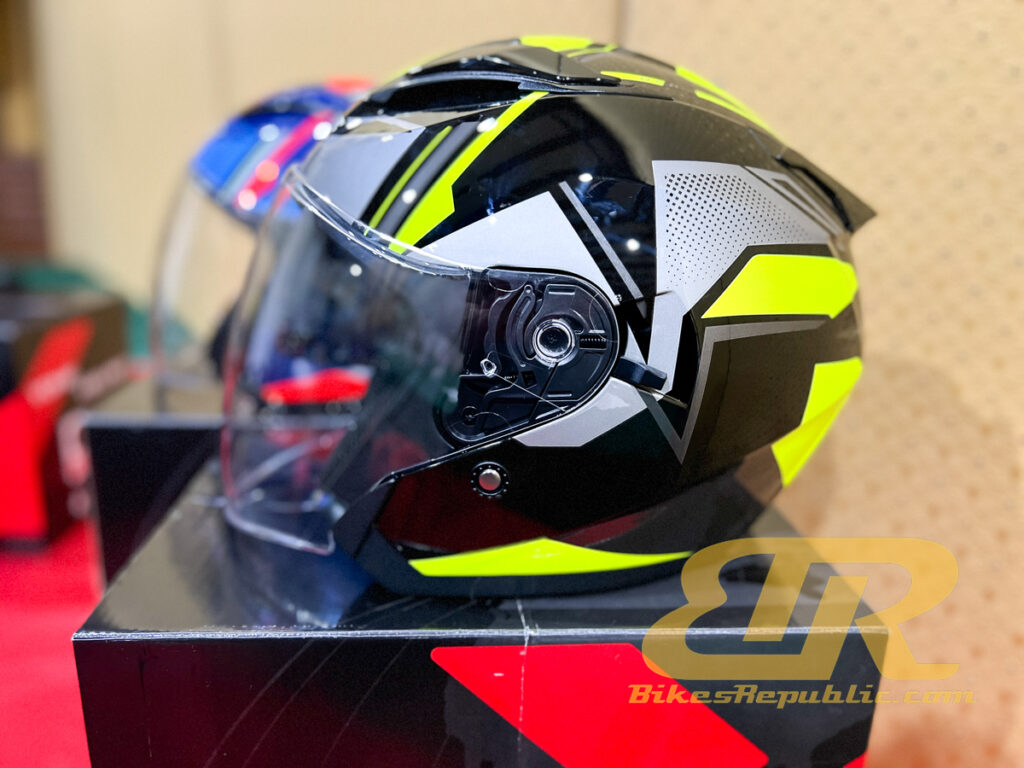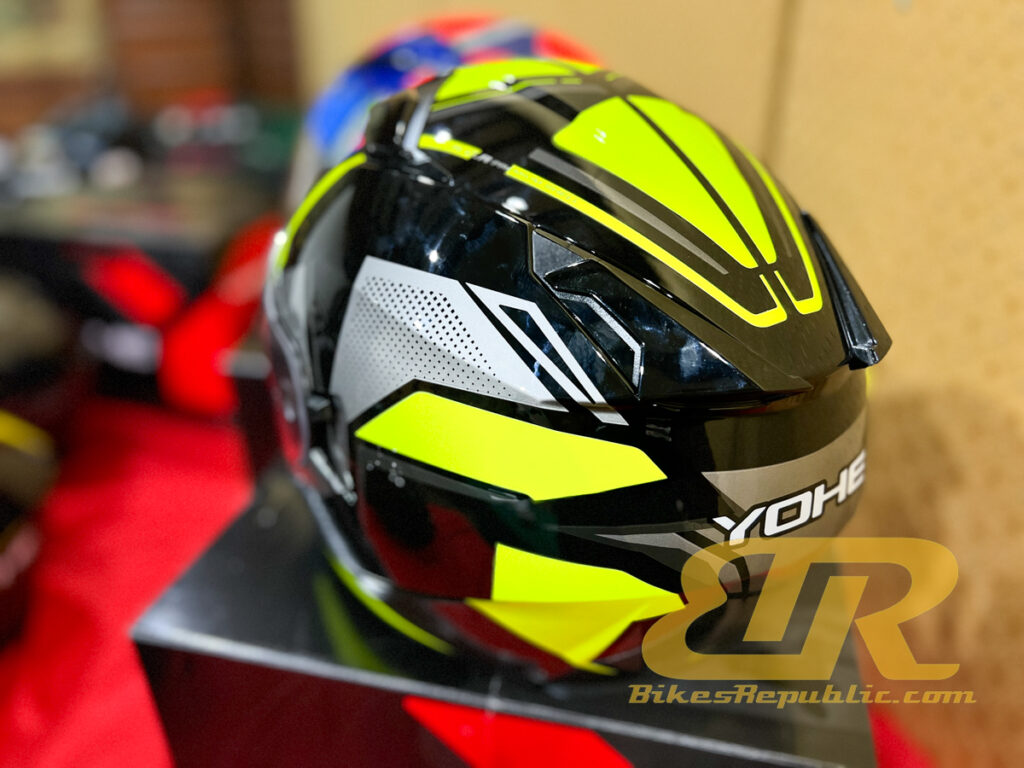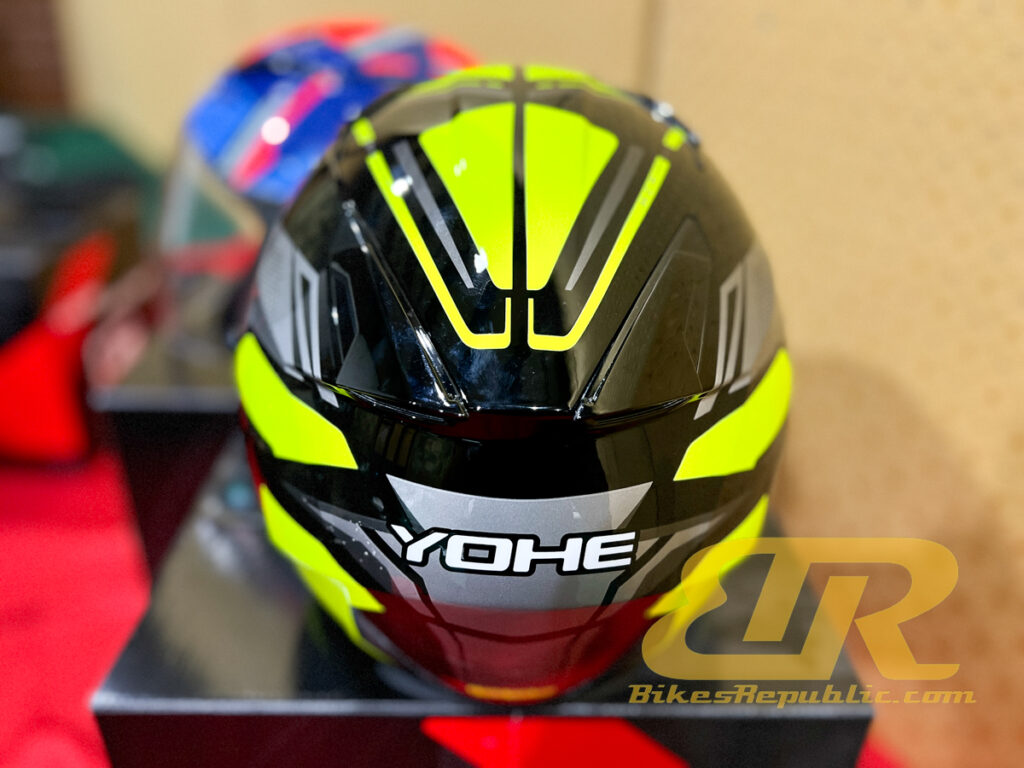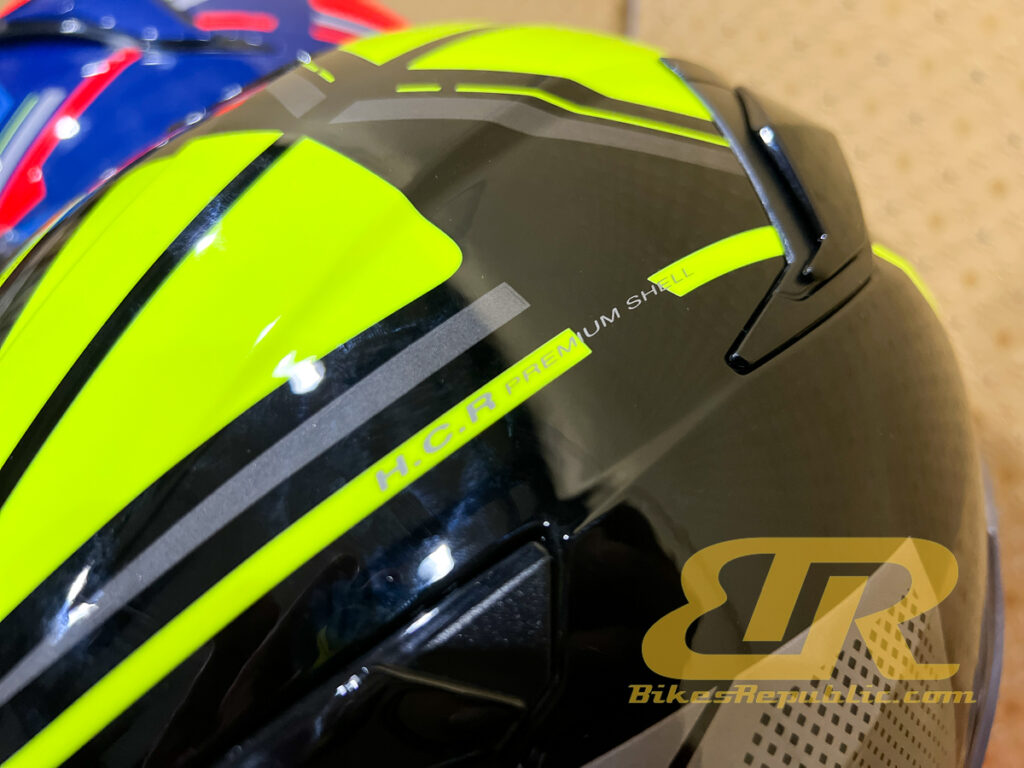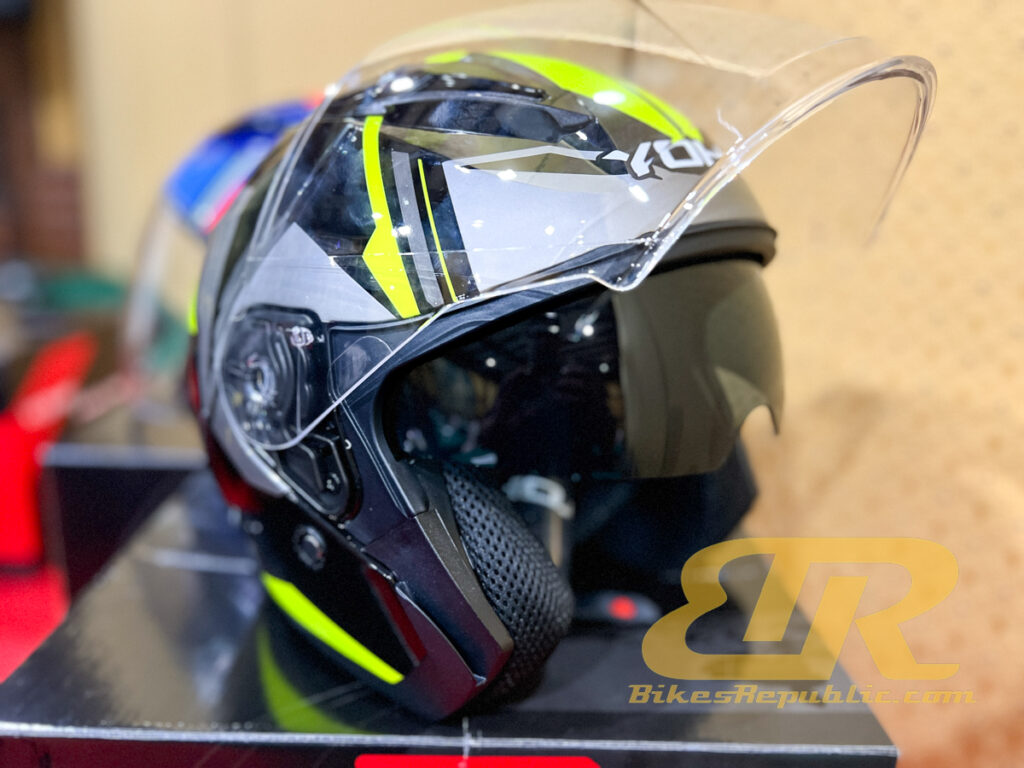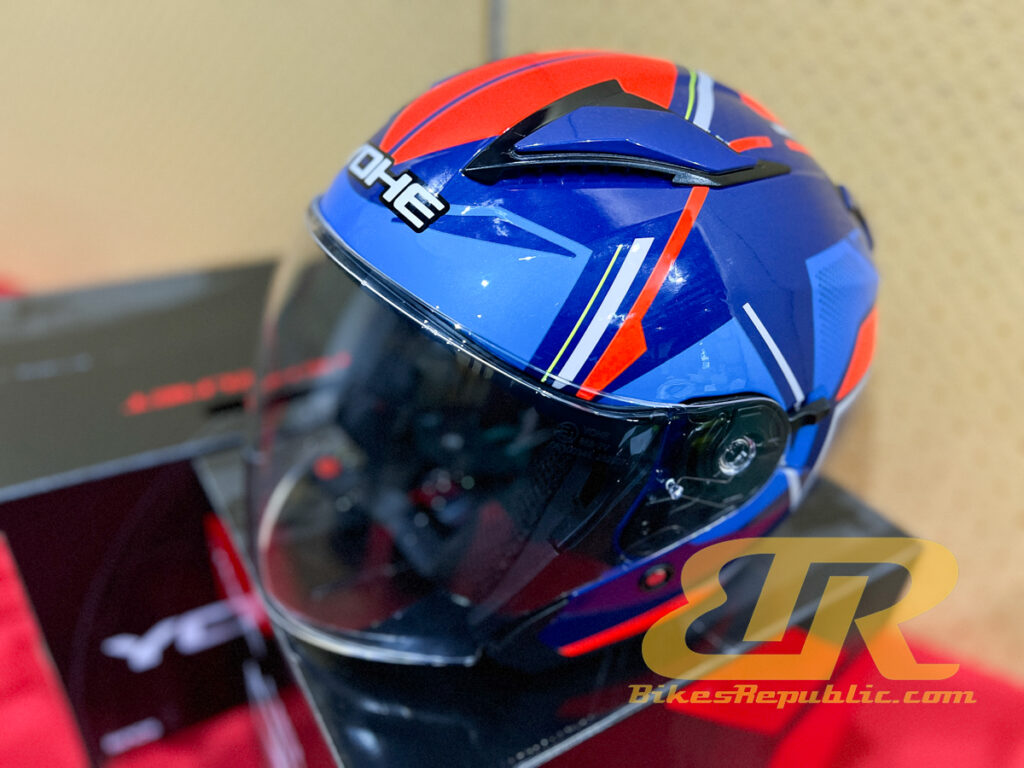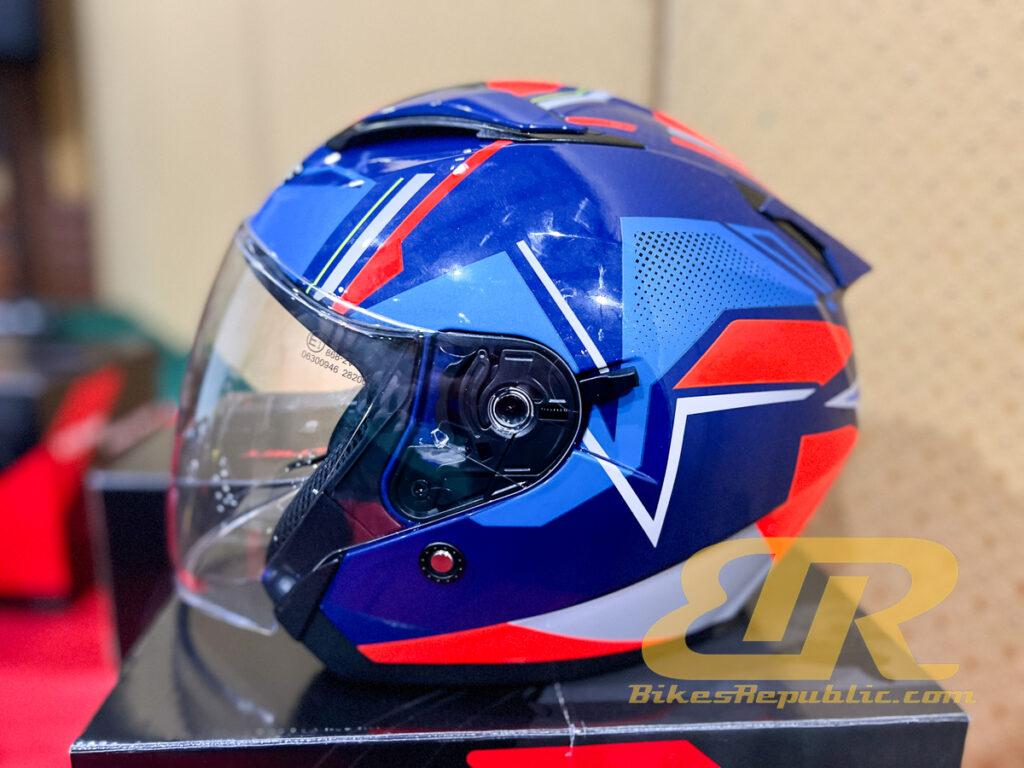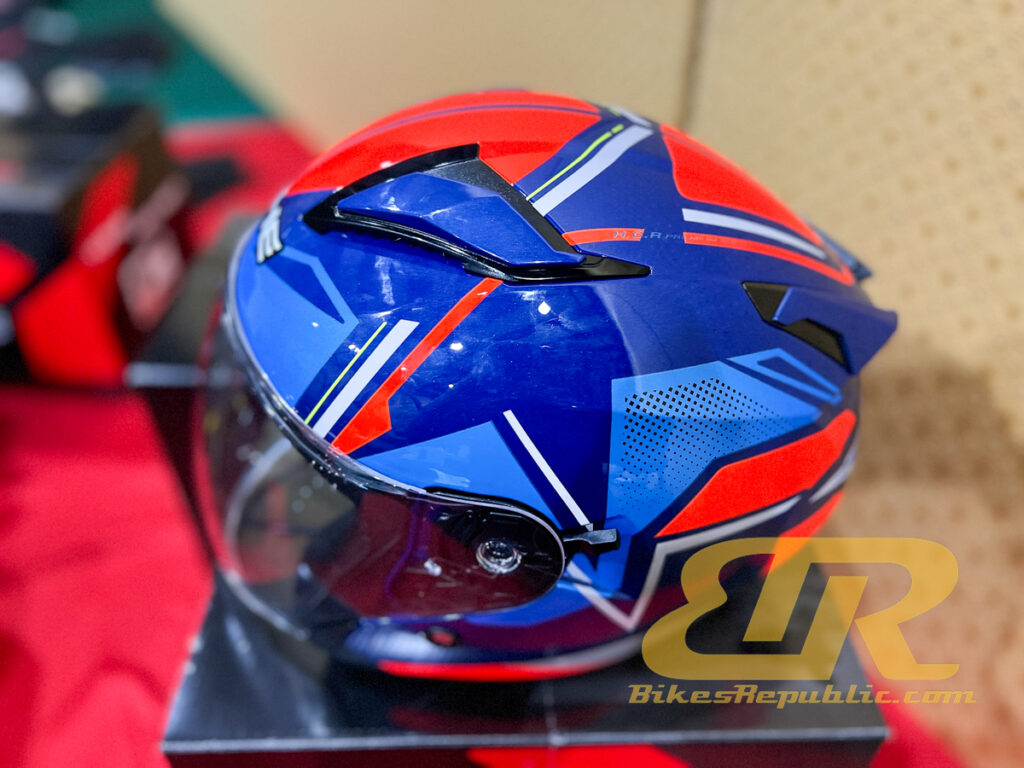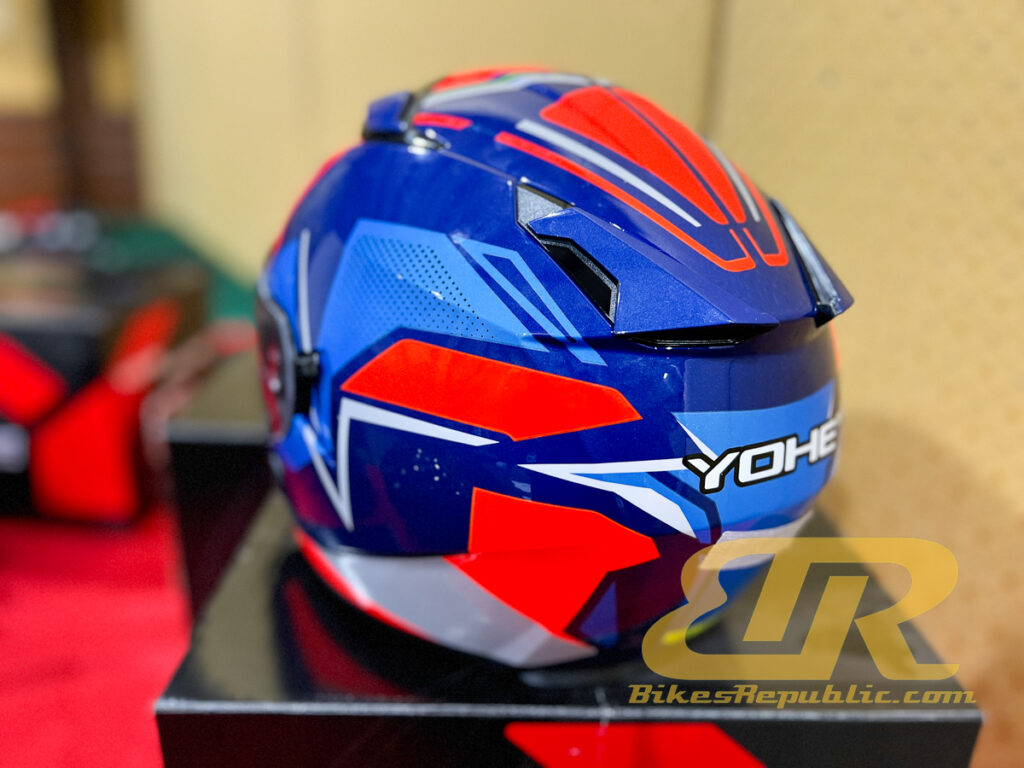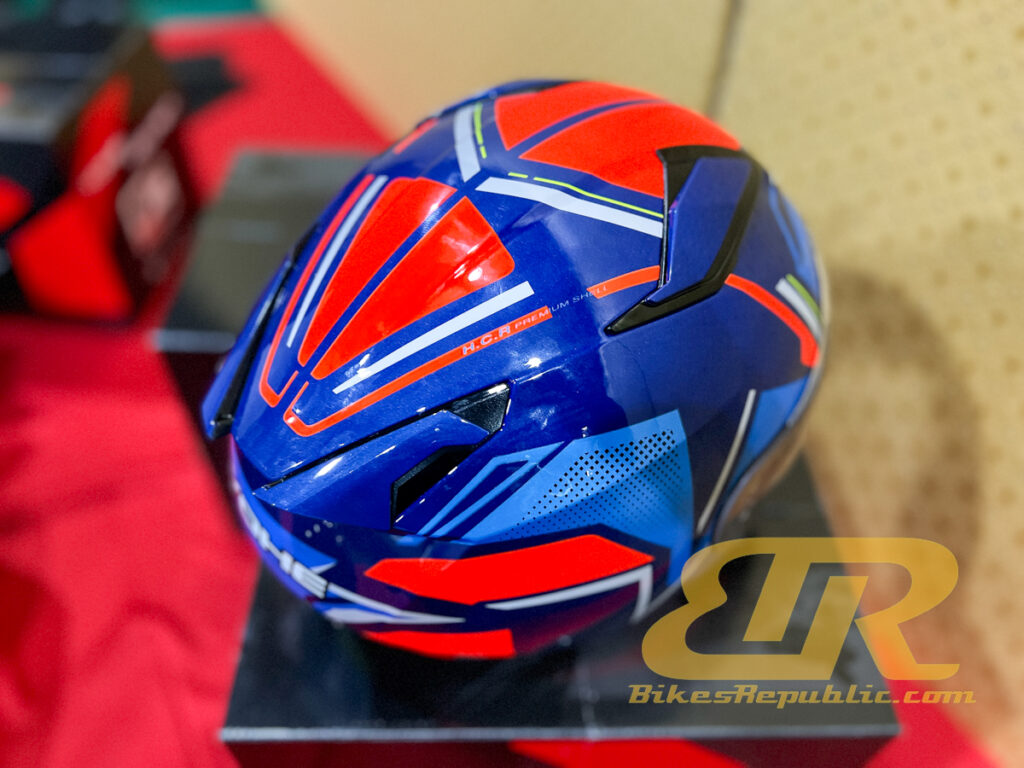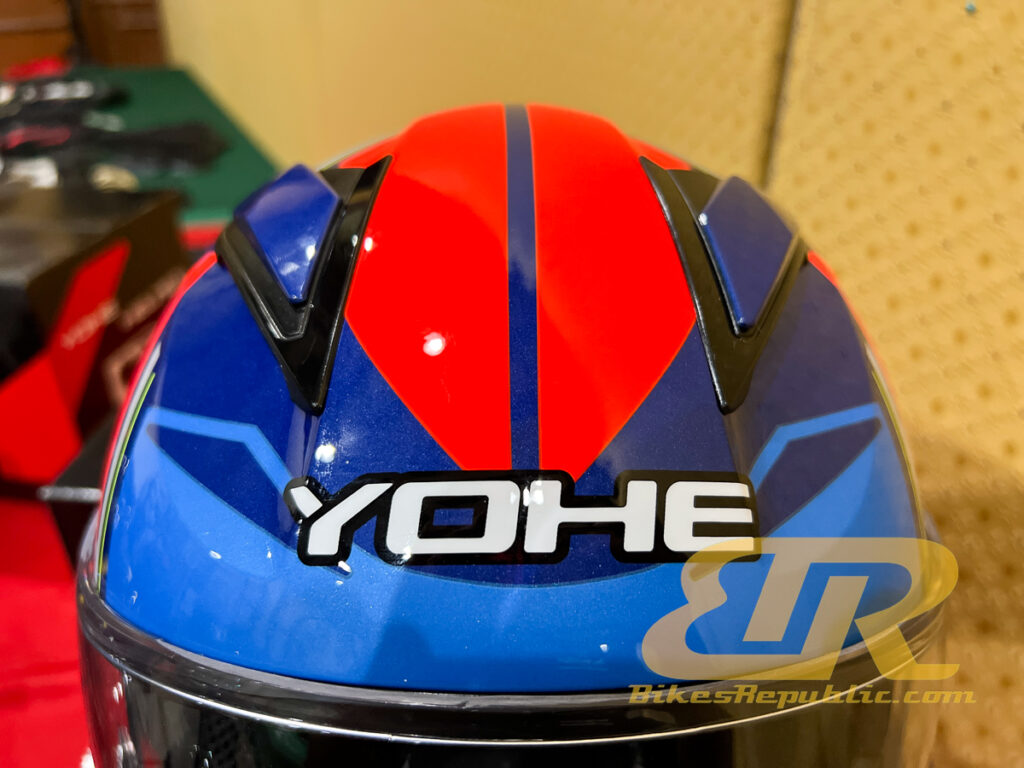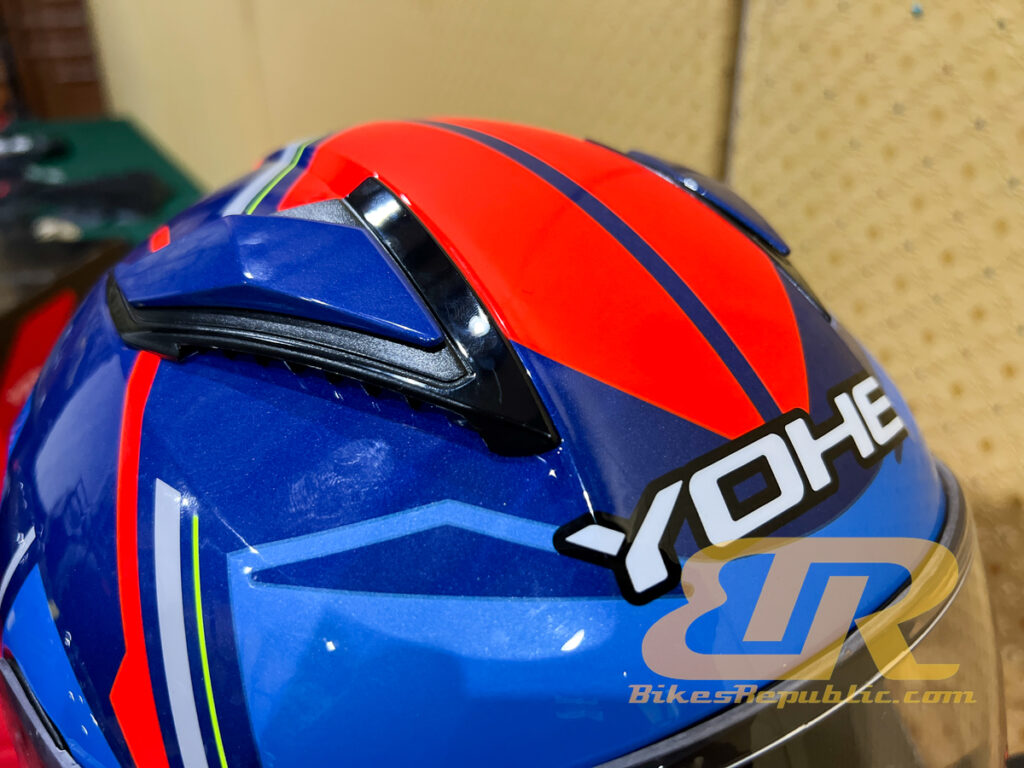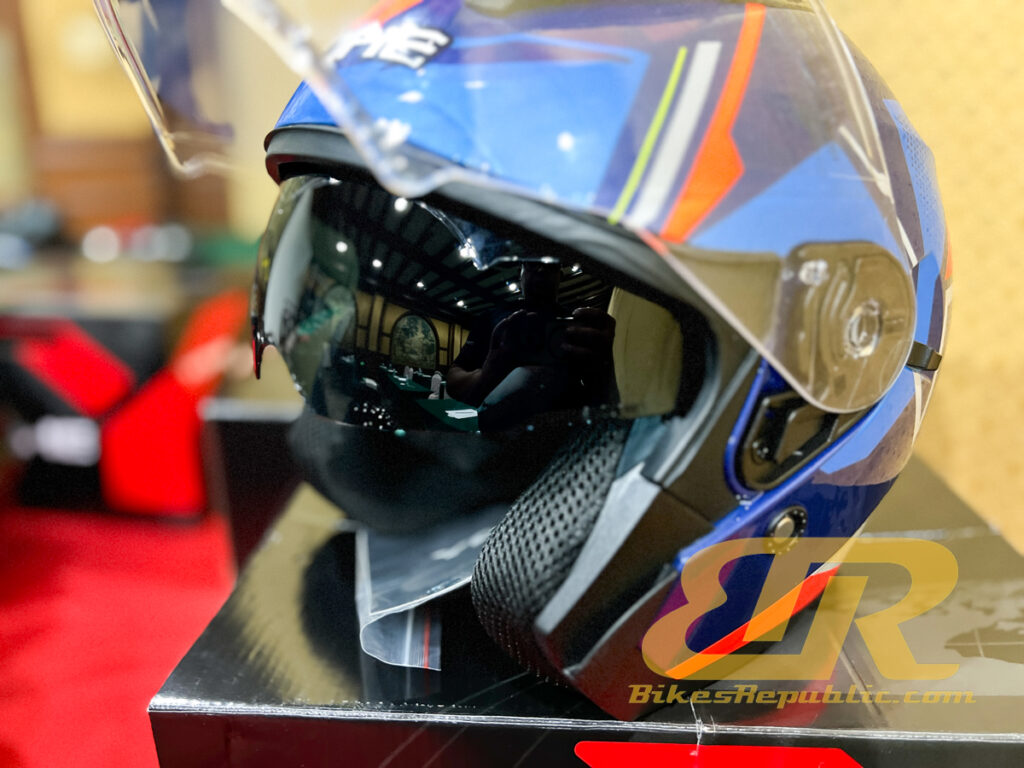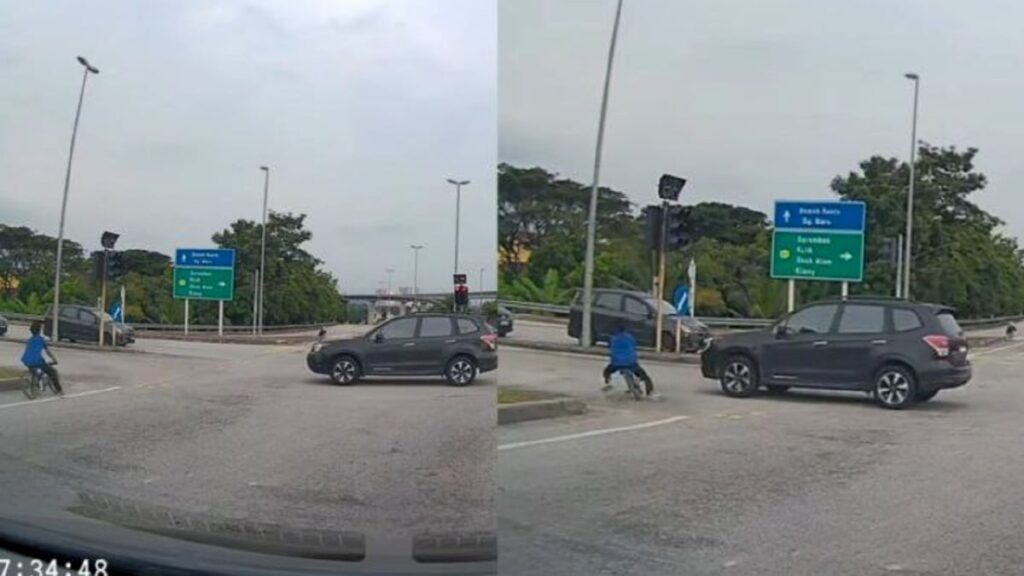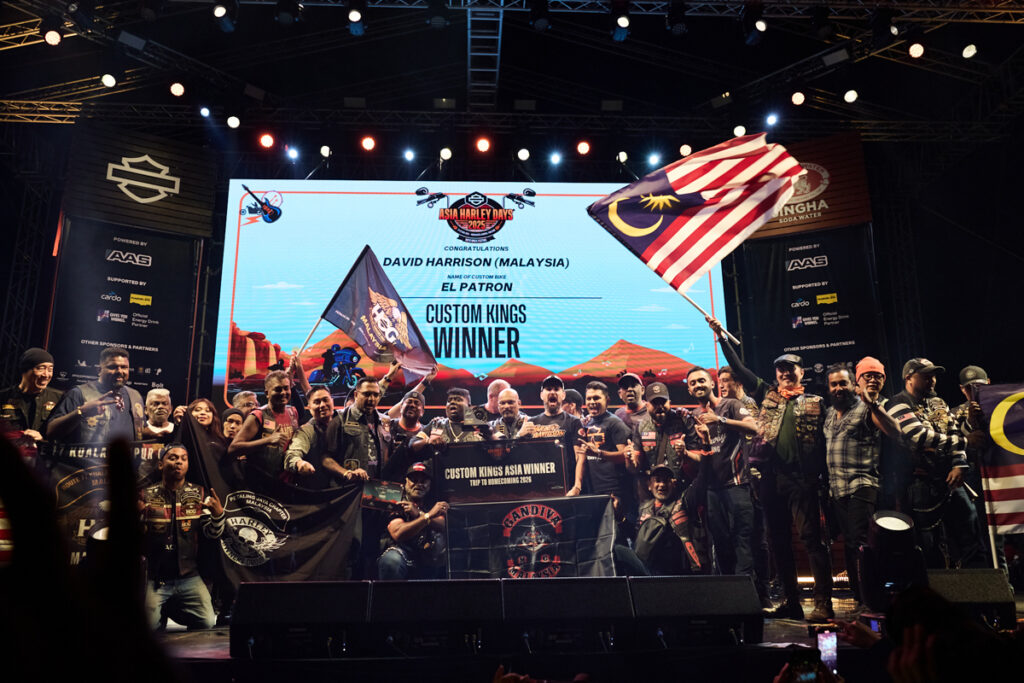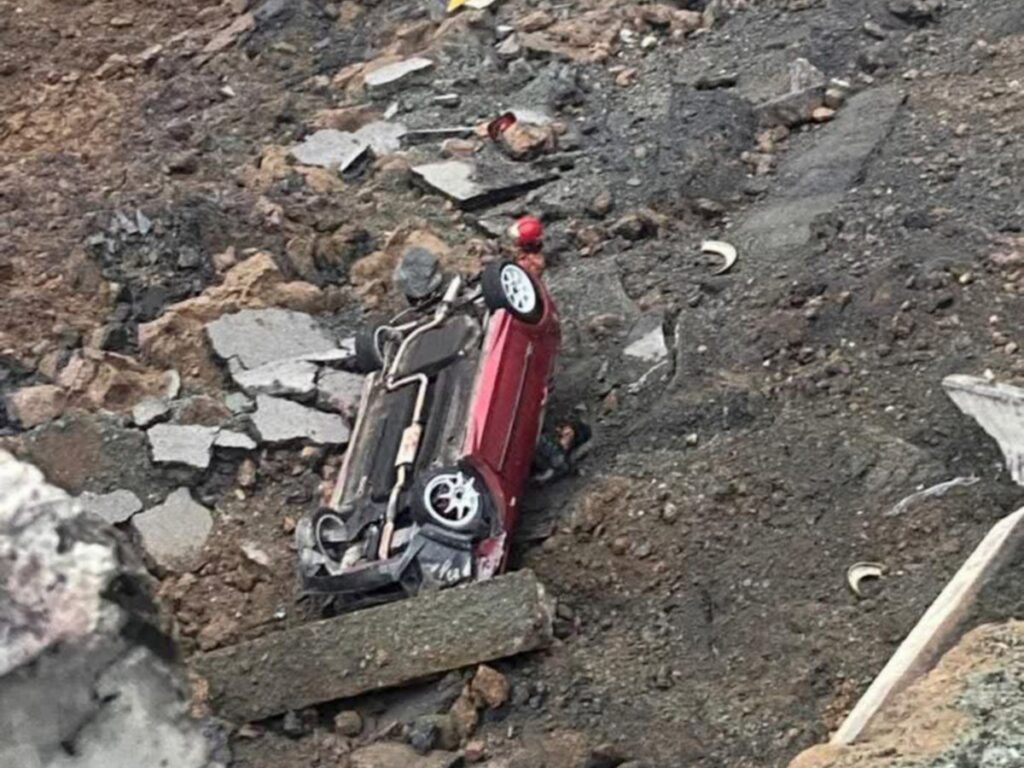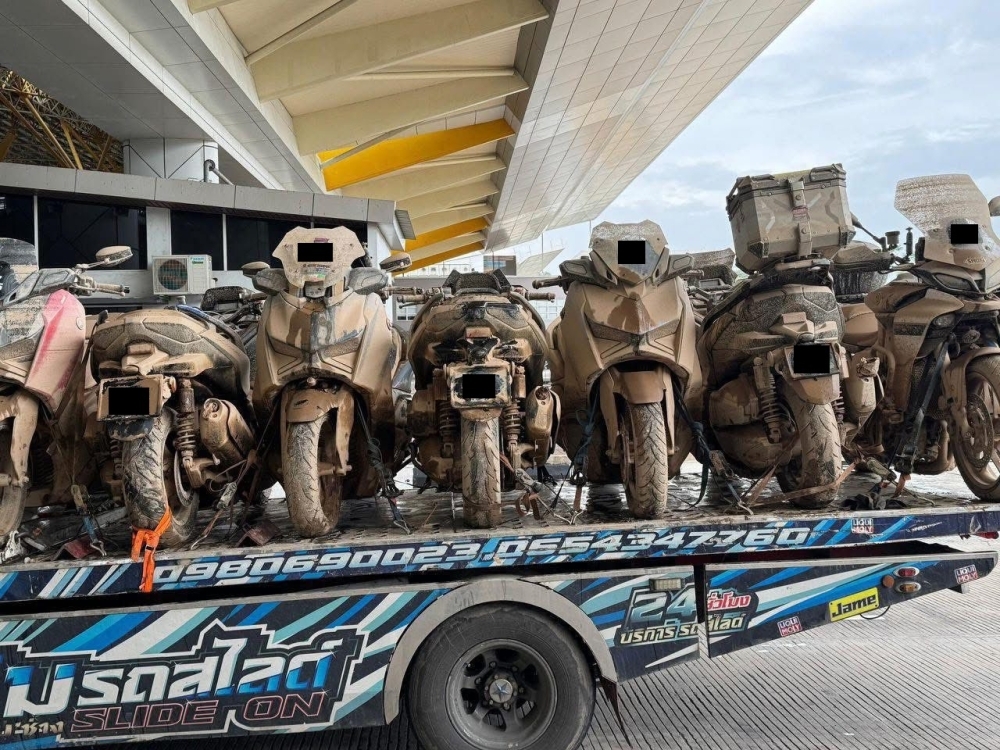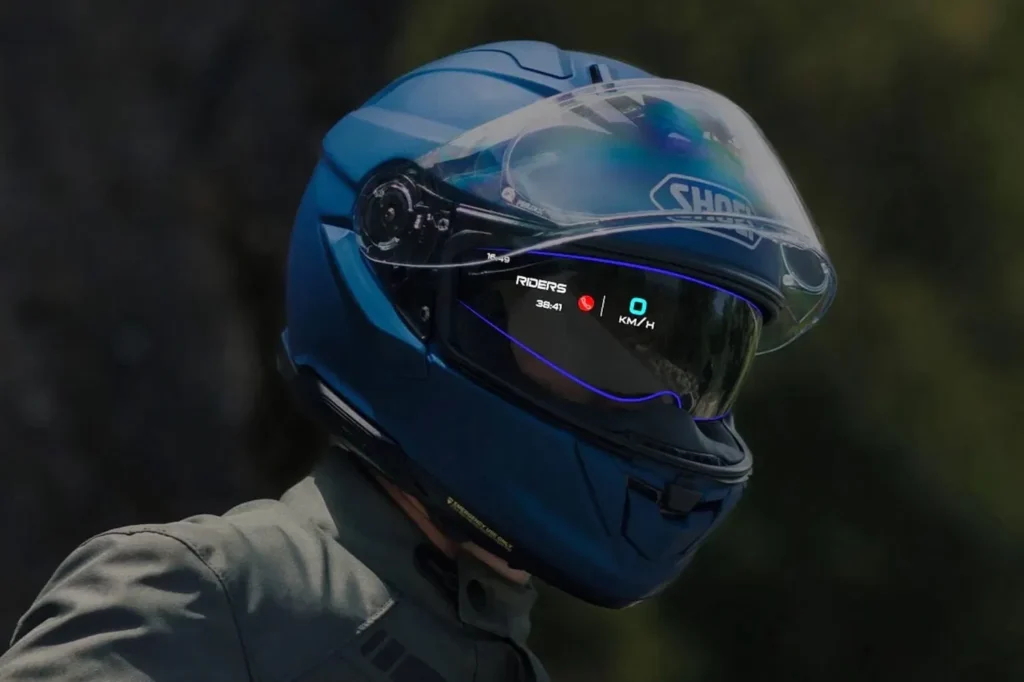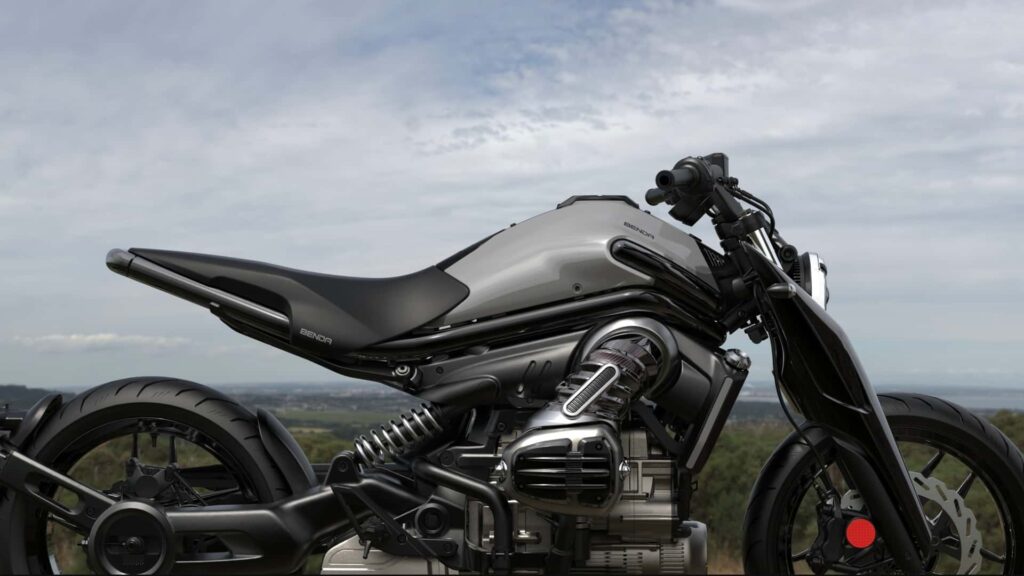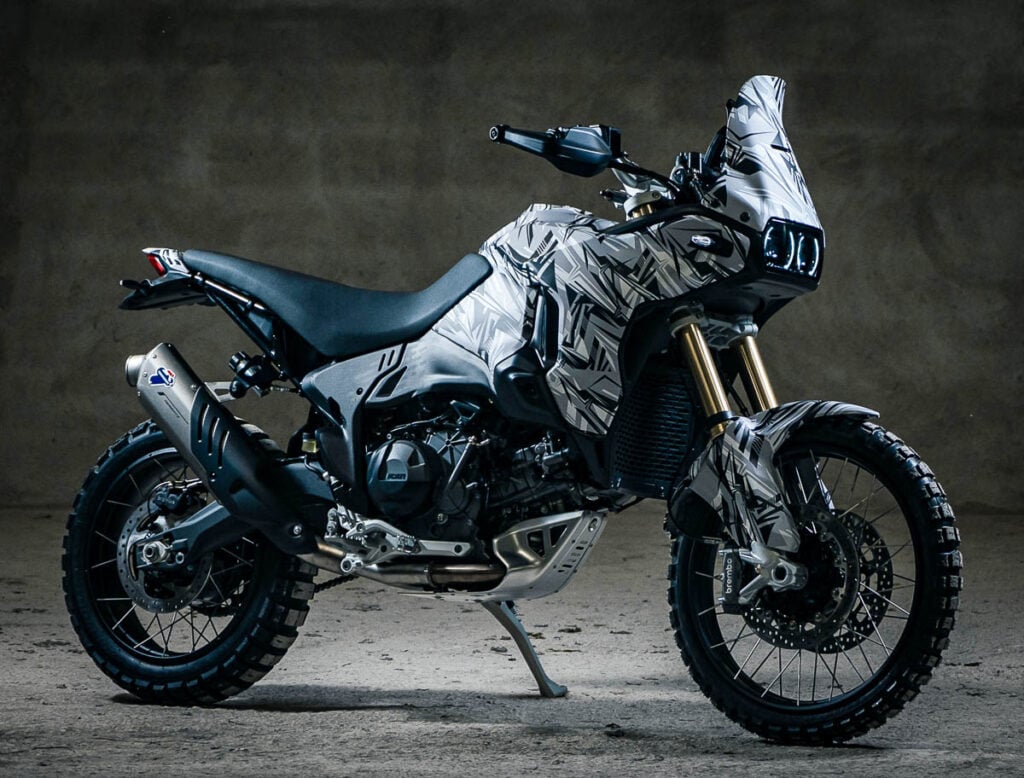Puppies? Cute. Kittens? Cute. Moda Moca? Cute too. But being merely cute does not guarantee a bike that is good to ride. Or does it?
Moda is a homegrown brand, and their products has found quite a following since launching its first scooter, the Sporter S. You can never label Malaysians as being unpatriotic, no siree, just look at PETRONAS.
What is it?
The Moca certainly piqued our interest when it was launched, looking well… like a Vespa. Before attacking us, do remember that the step-through scooter style was pioneered by Vespa.
But the Moca is somehow cuter with its modern retro look complete with bulging side panels and sharp tail, small wheels, plus this ‘baby blue’ and white colour combination (officially called Ocean Blue), among other things. The ‘snail’ top case certainly plays a factor, too. Personally, we will display the Moca in this particular colour combination if we had a baby supply shop.
Back to its purpose as a vehicle, the Moda Moca is an urban scooter or maybe even a suburban scooter, aimed at the everyday Joe and Jane with its affordable price and simplicity.
We are talking about the whole shebang here: Low seat and overall height, long and wide footboard, plenty of storage up front including a hook for we when take away a Bingxue drink, underseat storage for our children’s schoolbag, and charge our power-hungry phone. The top case accommodates a rainsuit plus some groceries.
Highlights and features
- 108cc, single-cylinder, SOHC, air-cooled, and fuel-injected engine which produces 8 hp at 7,500 RPM and 8.5 Nm at 6,500 RPM.
- The engine’s power is transmitted through a CVT and ending with a v-belt final drive.
- On the chassis front, a pair of conventional telescopic forks are up front, combined with a single-sided swingarm at the back.
- Braking is handled by a solo disc in front, and a drum brake out rear.
- Rims are 10-inches at both ends.
- LED lighting all-around.
- An LED screen provides necessary riding data such as speed, RPM, fuel level, trip, odometer, and clock.
- 8-litre fuel tank.
- Claimed weight of just 89 kg (not a typo!).
- Do note that the top case on our test bike is an accessory. Other accessories include a windscreen.
Riding the Moda Moca
The scoot is not pretentious – Moca did not dress it up to look sophisticated, and instead kept it K.I.S.S. (Keep It Simple, Stup*d). There is no navigation and Bluetooth connectivity to waste many minutes over, no ride modes to set wrongly for the wrong occasion (i.e. Sport Mode in the Rain). So we get on, start up, twist and go.
That combination of low 89kg weight and 10-inch wheels surprise us, what more when we just got off a 200-plus kg maxi scooter. Any steering input or shift of bodyweight on the Moca turns the bike without hesitation. To be honest, it was initially unnerving, causing us to grab the handlebar with a death grip as the bike weaves left and right. It also hops over the little bumps on the road, as there is less weight from the top for the bumps to push up against.
It needs to be said that riding a motorcycle, as in a different motorcycle every week, instills the skill to adapt quickly. And once we adapt, the Moca as fun in its own way, turning like a bicycle instead of a motorized vehicle. Countersteering makes the bike turn too abruptly so we shift our weight through our hips.
Given its lightness, riding past or being passed by trucks require some finesse to avoid being buffeted like a leaf or worse, being pulled in by the airflow.
We are not complaining, as there are many other advantages due to that lightness. One, the Missus will find it easy to push the bike around whether seated on it or off. In fact, we older men do not have to risk throwing our backs our when moving it about, say, reversing it out of the driveway or parking lot. Two, the brakes are not exceptionally strong by nature, but the lack of weight lets it work well, as there is less inertia to overcome to bring the bike’s speed down. Three, the bike can accelerate faster than we would normally see on 110cc bikes. And four, in no uncertain terms, allows the bike to save fuel.
It may be fitted with a 110cc engine, but it accelerates relatively quickly while still retaining some oomph while cruising on the highway.
The true habitat of the Moda Moca, as intended by its maker, is the urban environment. Think the Bukit Bintang, Pavilion Kuala Lumpur, KLCC, areas and you get the picture. Gridlocked traffic? What traffic? Just maneuver around it.
The narrow handlebar allows us clear cars’ side mirrors easily, letting us split lanes without (much) fear. In fact, the bike’s rearview mirrors have extra-long stems and they too, clear side mirrors handily.
While the bike’s rear section looks wide, it does not stick out beyond the front leg shield’s width. So, if the leg shield clears the obstruction, so does the rear.
And again, coming up to heavy traffic, a small shift of bodyweight at the hip is enough to maneuver the bike through gaps that would leave bigger scooters stuck.
Thus, it confirms that the Moda Moca is 100 percent suitable for the urban landscape. Here is a bike that is easy to use, has a low seat height, while providing the necessary comforts and utility features for the daily commute. Sending the children to school a few later when traffic builds up exponentially by the minute is not a bother because traffic does not matter anymore. Just weave through all that muck while watching the other parents seethe in the lock jam.
Similarly, shopping for groceries is easy because leg shields and tall central structure which holds the steering column form a deep footwell to carry those goods.
We also envision the bike being used in Tamans and villages where the owner zips around happily or when heading to the masjid for prayers or ‘ceramah.’
Before closing, there is one trait to note. Unlike other automatic scooters, the Moca’s engine can be started while resting on its side-stand, but of course, while you apply rear brake. Other scooters, on the other hand, can only be started with the side-stand up, meaning either when it is parked on its full-stand or when the rider sits on it with the side-stand retracted. It is just a note to future owners to not open or blip the throttle when starting the engine or risk having it leaping away and entering the house or shop. Or into traffic.
Conclusion
The Moda Moca provides good value to those who want a daily commuter that is easy to ride and live with – just get on and ride. And, we did not even need to top up the fuel tank despite riding the bike hard when we hit the highways. 4.8 litres of fuel was more than enough over four days. At just RM3,988 (net selling price, not on-the-road), we are hard-pressed to think of another scooter that provides such value. This is a bike this author will leave with the Missus for her to send and pick up the three children at school and letting us save up on school bus fees.
In closing, it was a satisfying test and review. Yes, it is cute in more ways than one.
The Moda Moca is available in four trendy colours, namely Ocean Blue, Neon Orange, Citrus Green, and Piano Black. But we want ours in Baby Blue… er… Ocean Blue.
MODA MOCA SPECIFICATIONS
| Engine | Single-cylinder, SOHC, air-cooled, 4-stroke |
| Displacement | 108cc |
| Fuel system | EFI |
| Certification | Euro 4 |
| Maximum power | 8.0 hp @ 7,500 RPM |
| Maximum torque | 8.5 Nm @ 6,500 RPM |
| Transmission | CVT, V-belt final drive |
| Fuel capacity | 4.8 litres |
| Front brake | Disc brake with single piston caliper |
| Rear brake | Drum brake |
| Front suspension | Hydraulic telescopic forks |
| Rear suspension | Uni-swing type |
| Wheel size (front) | 3” x 10” |
| Wheel size (rear) | 3.5” x 10” |
| Wheelbase | 1275 mm |
| Seat height | 738 mm |
| Weight | 89 kg |


